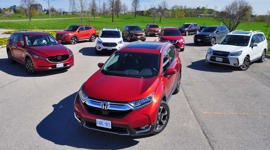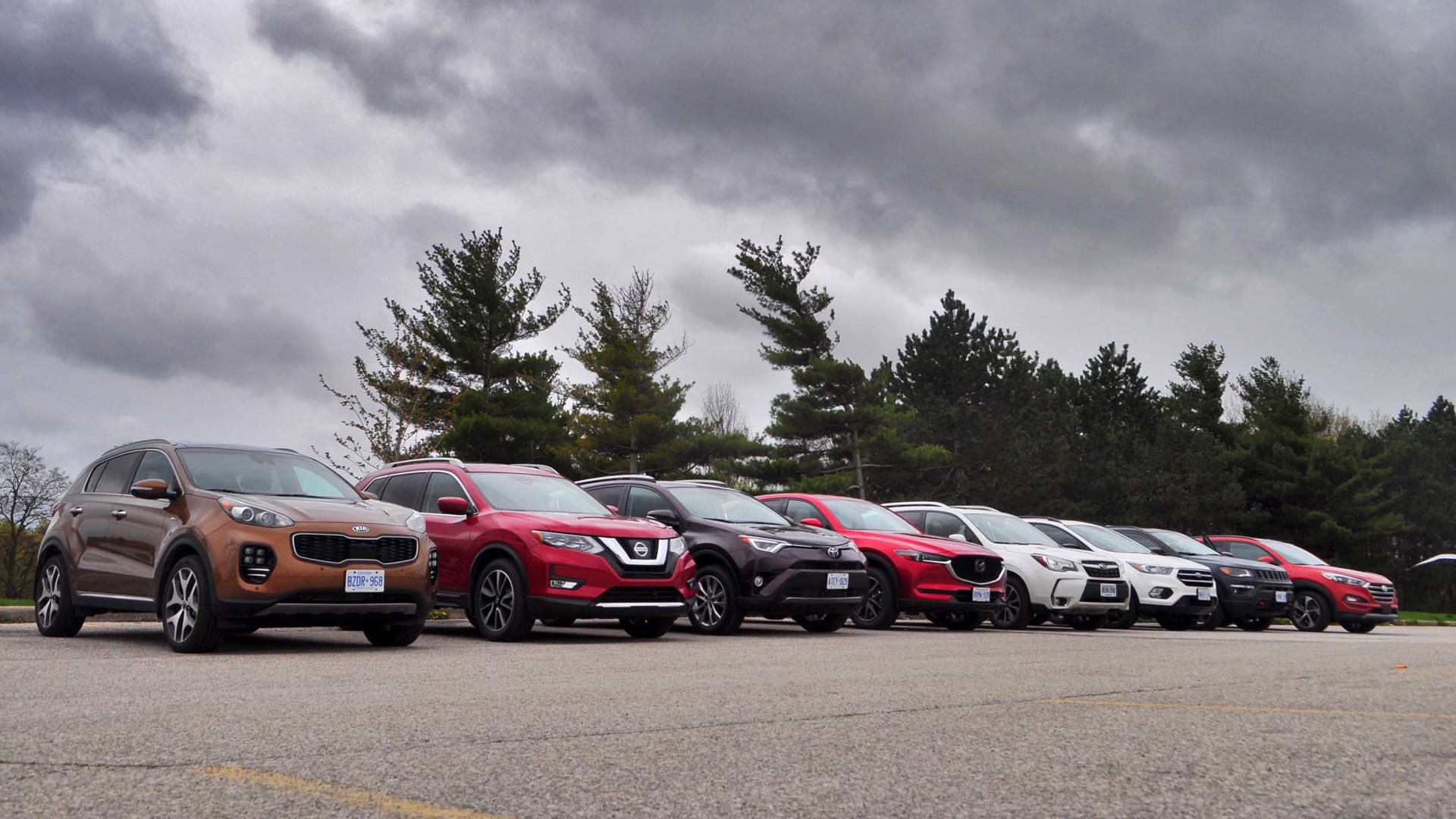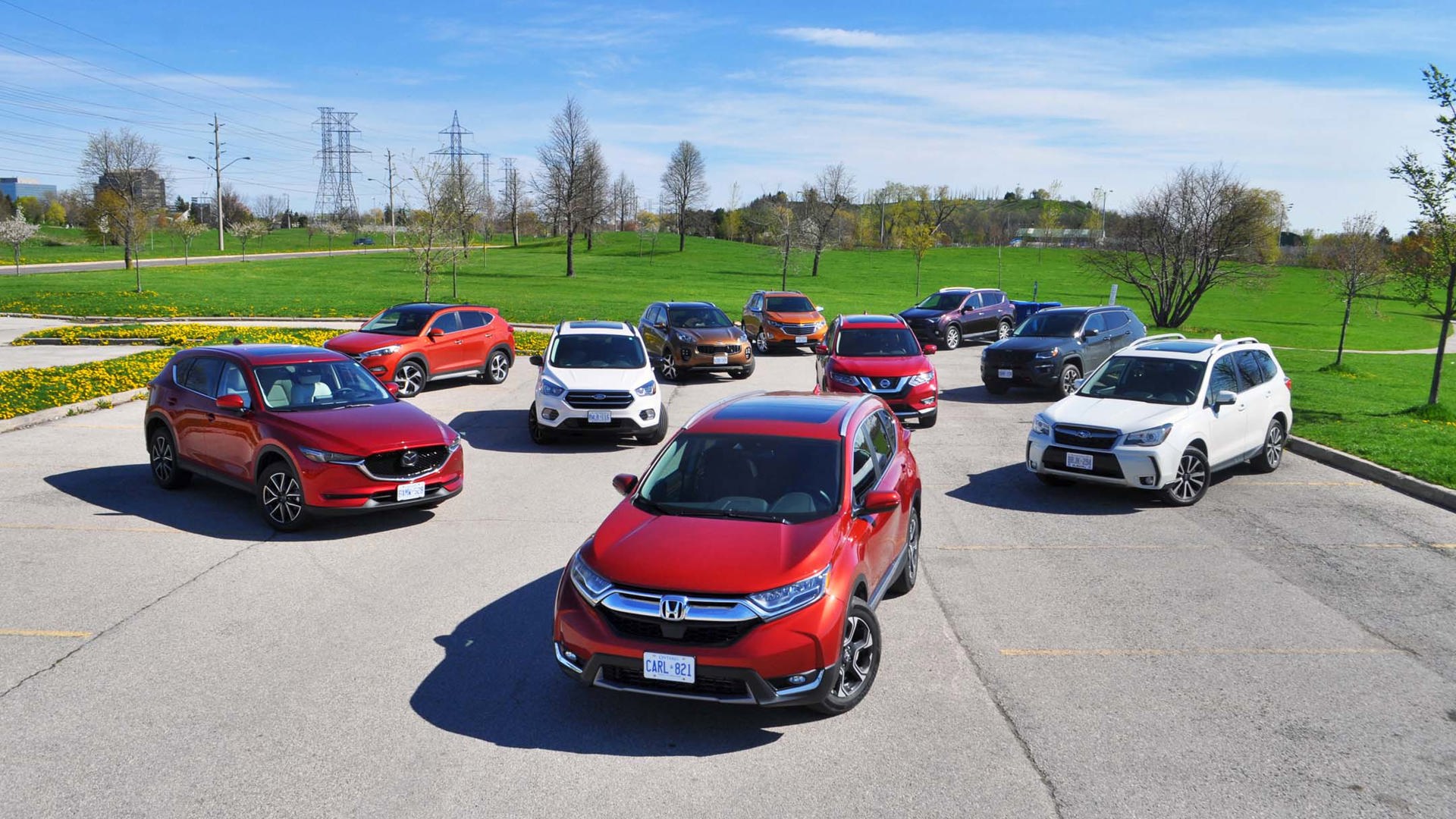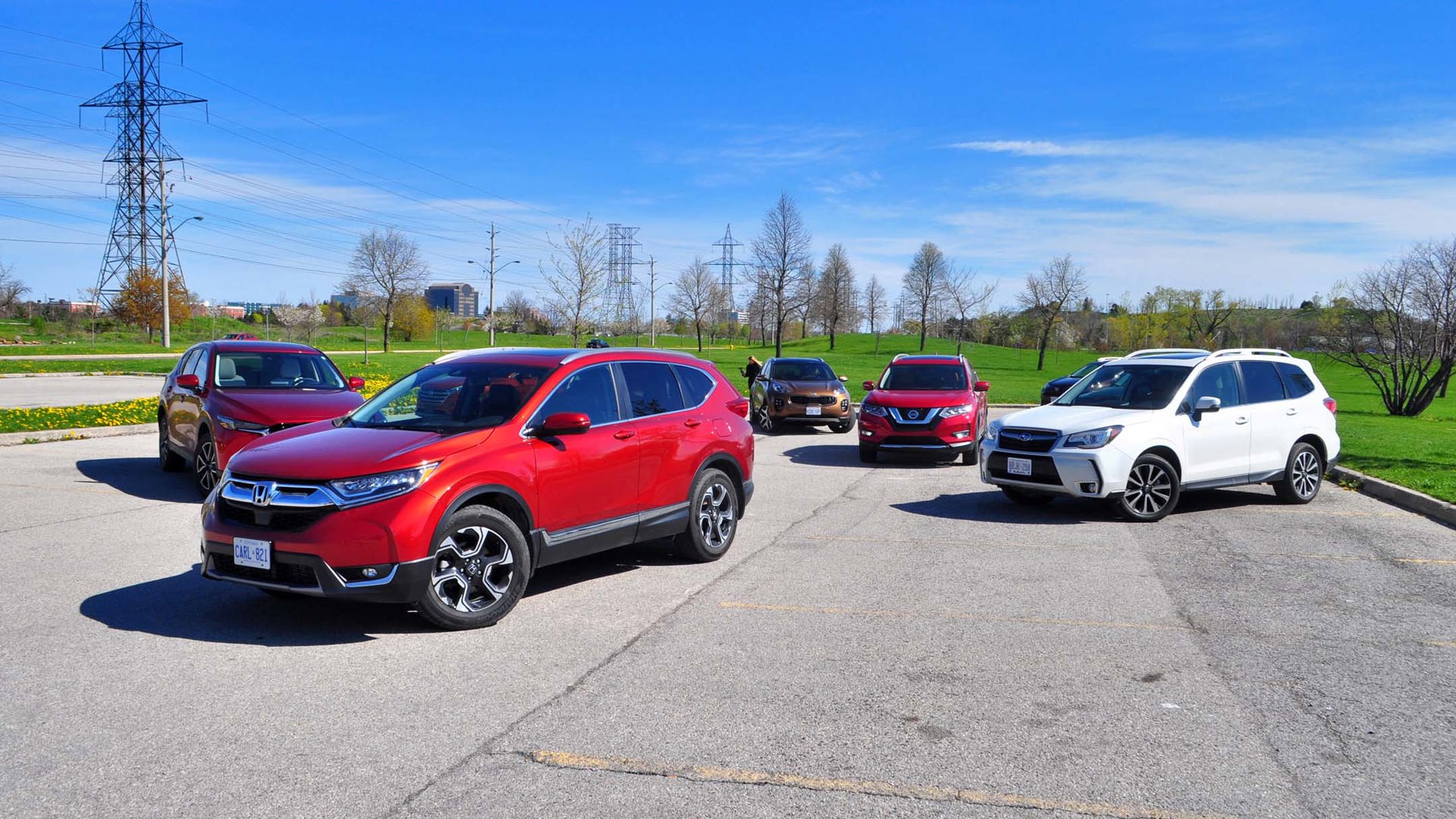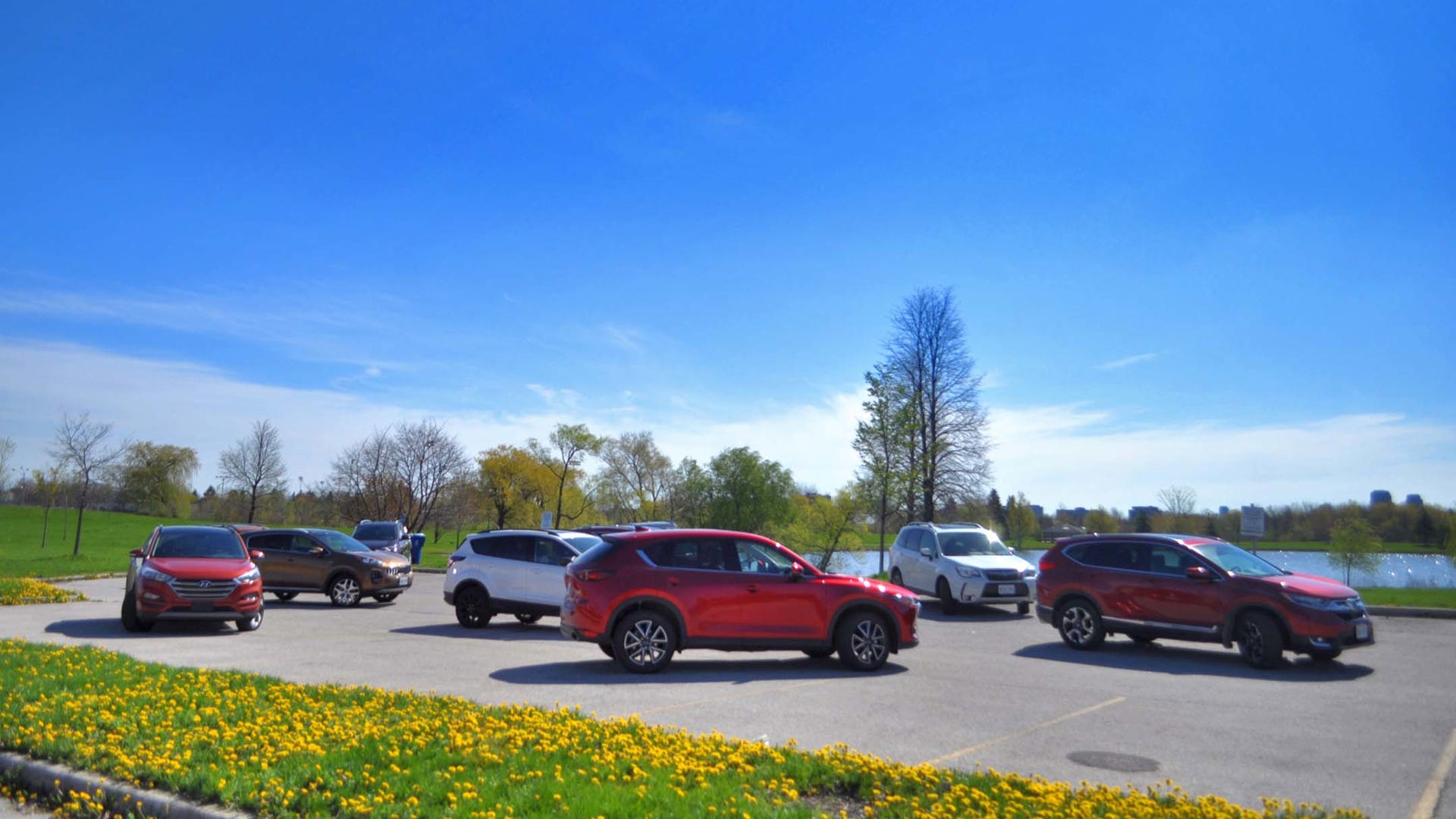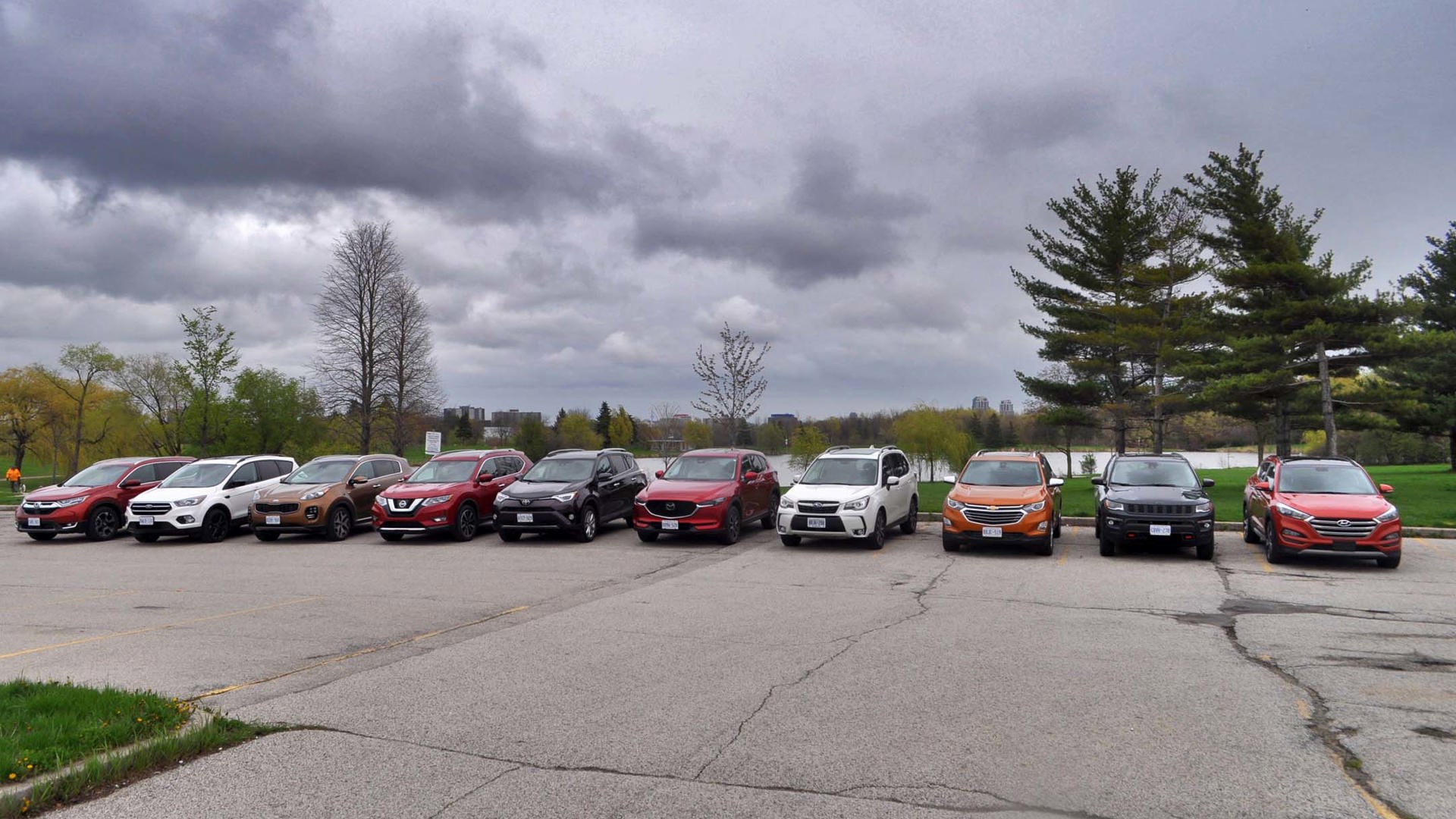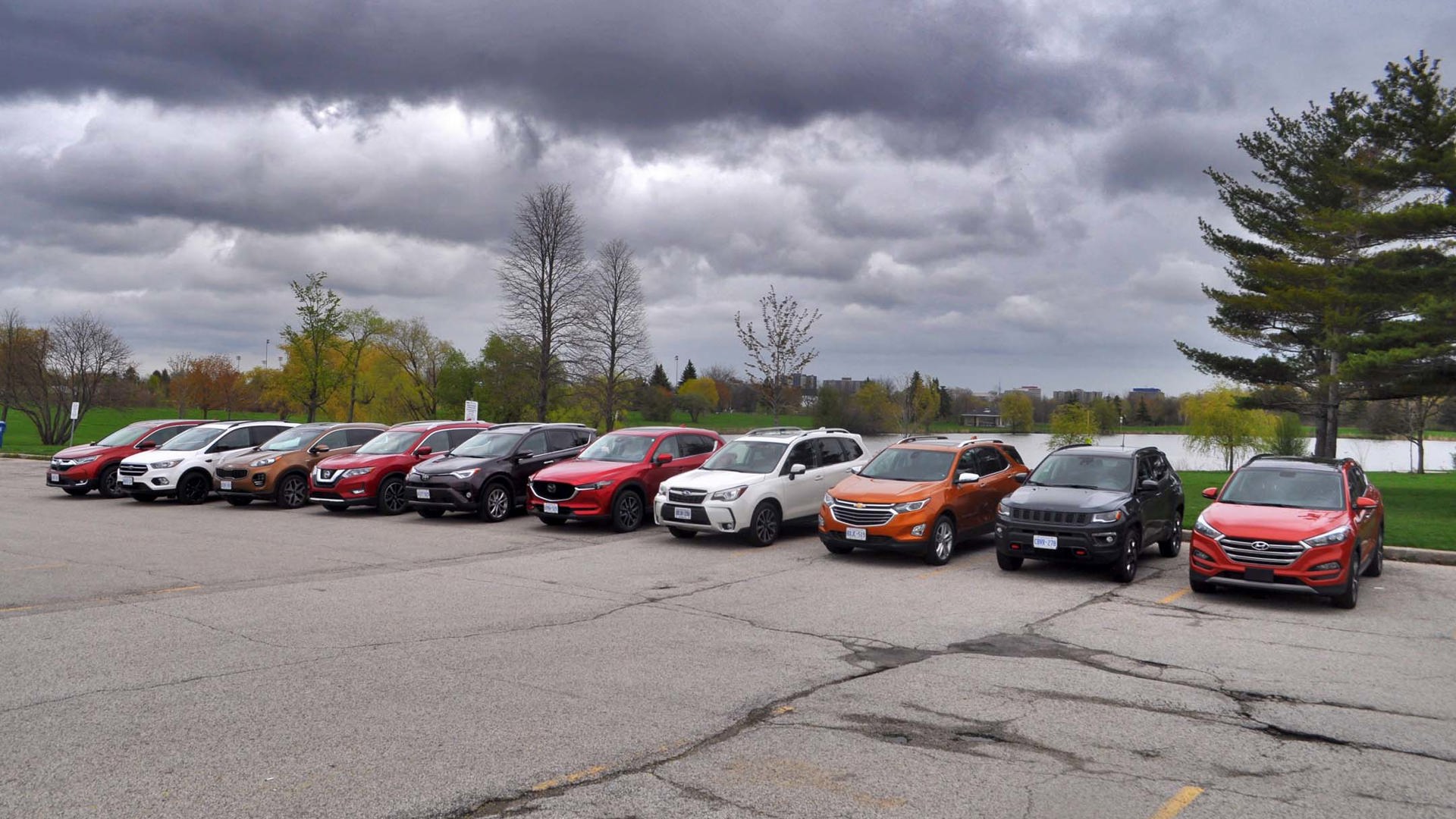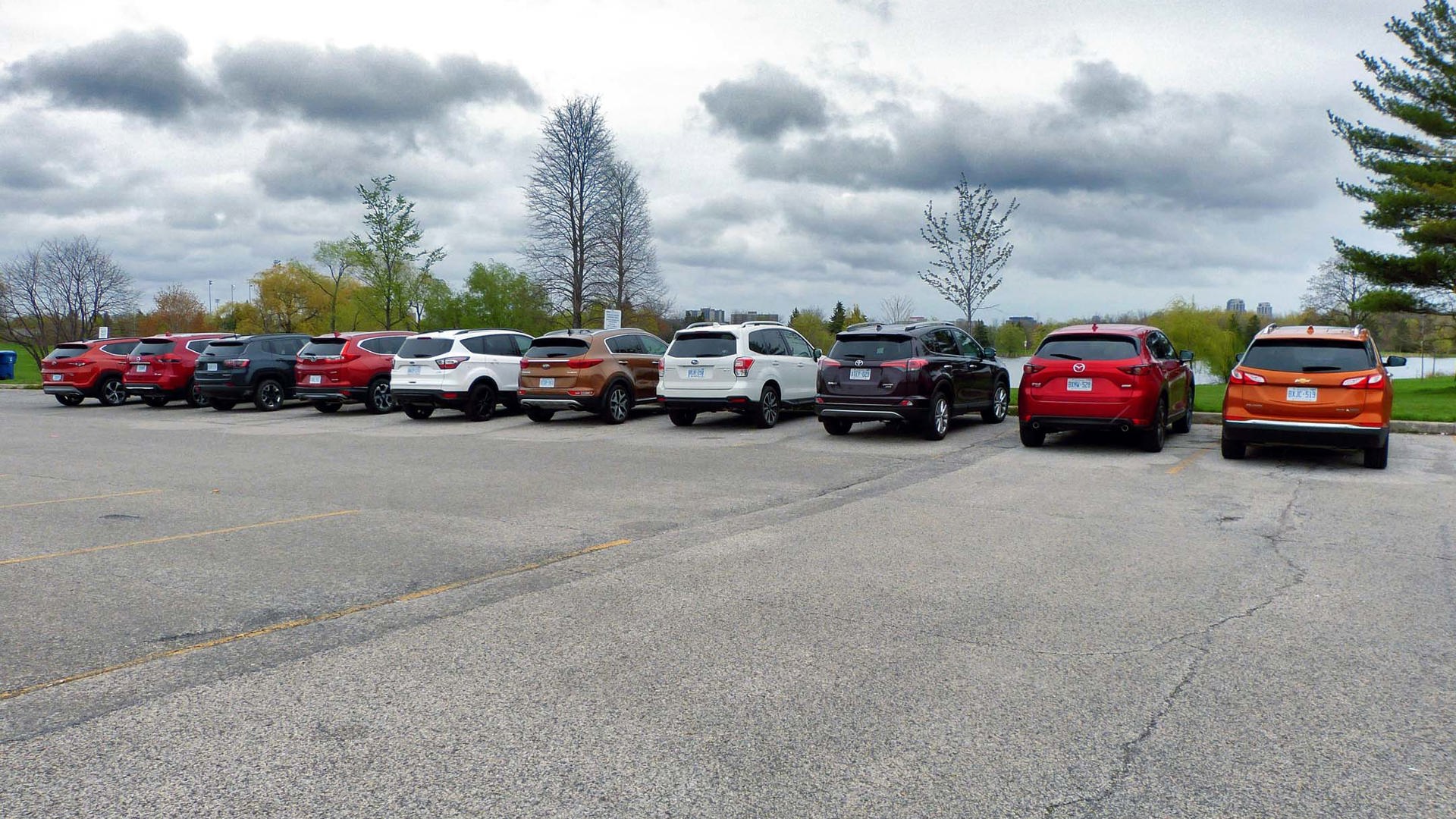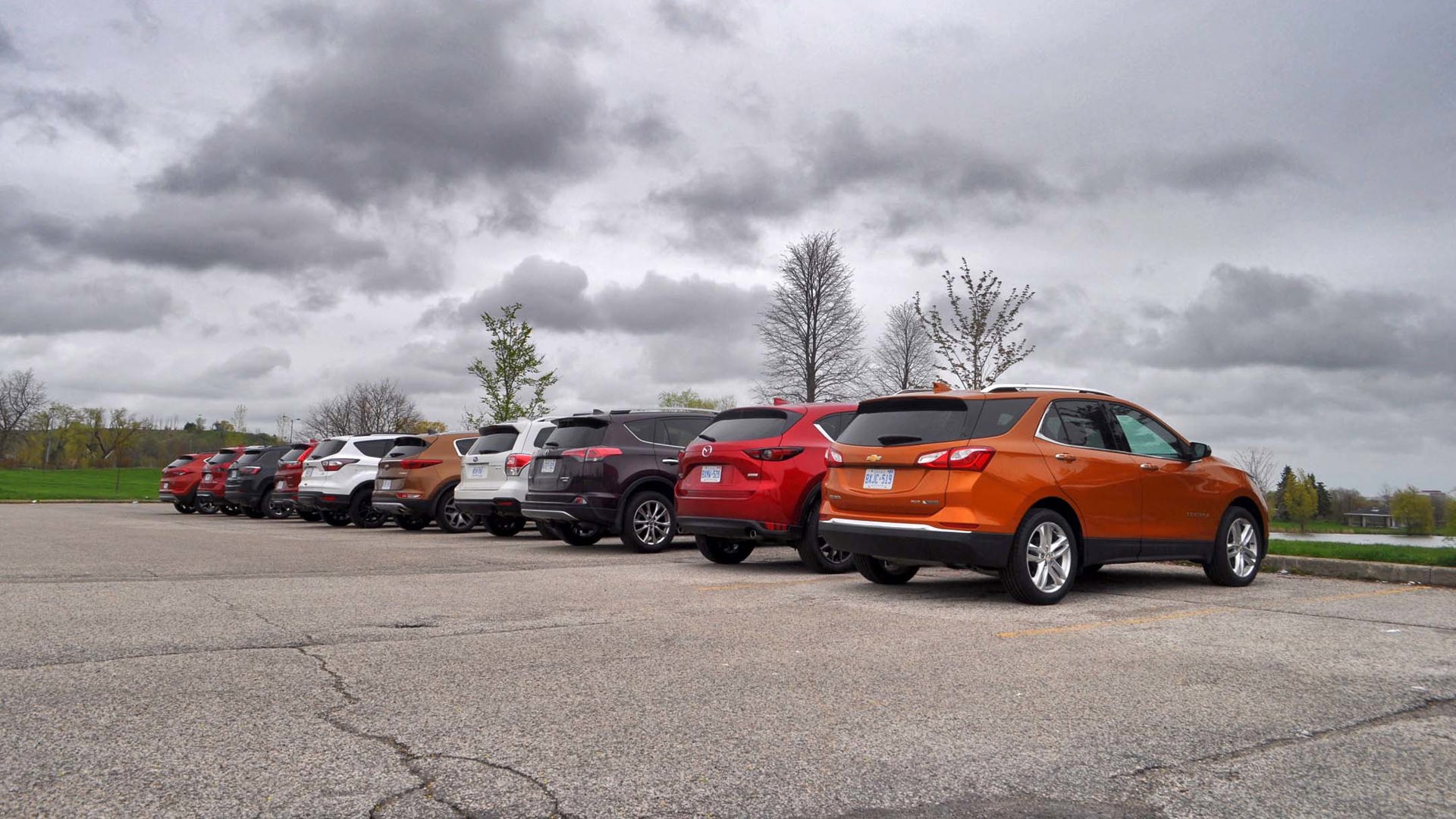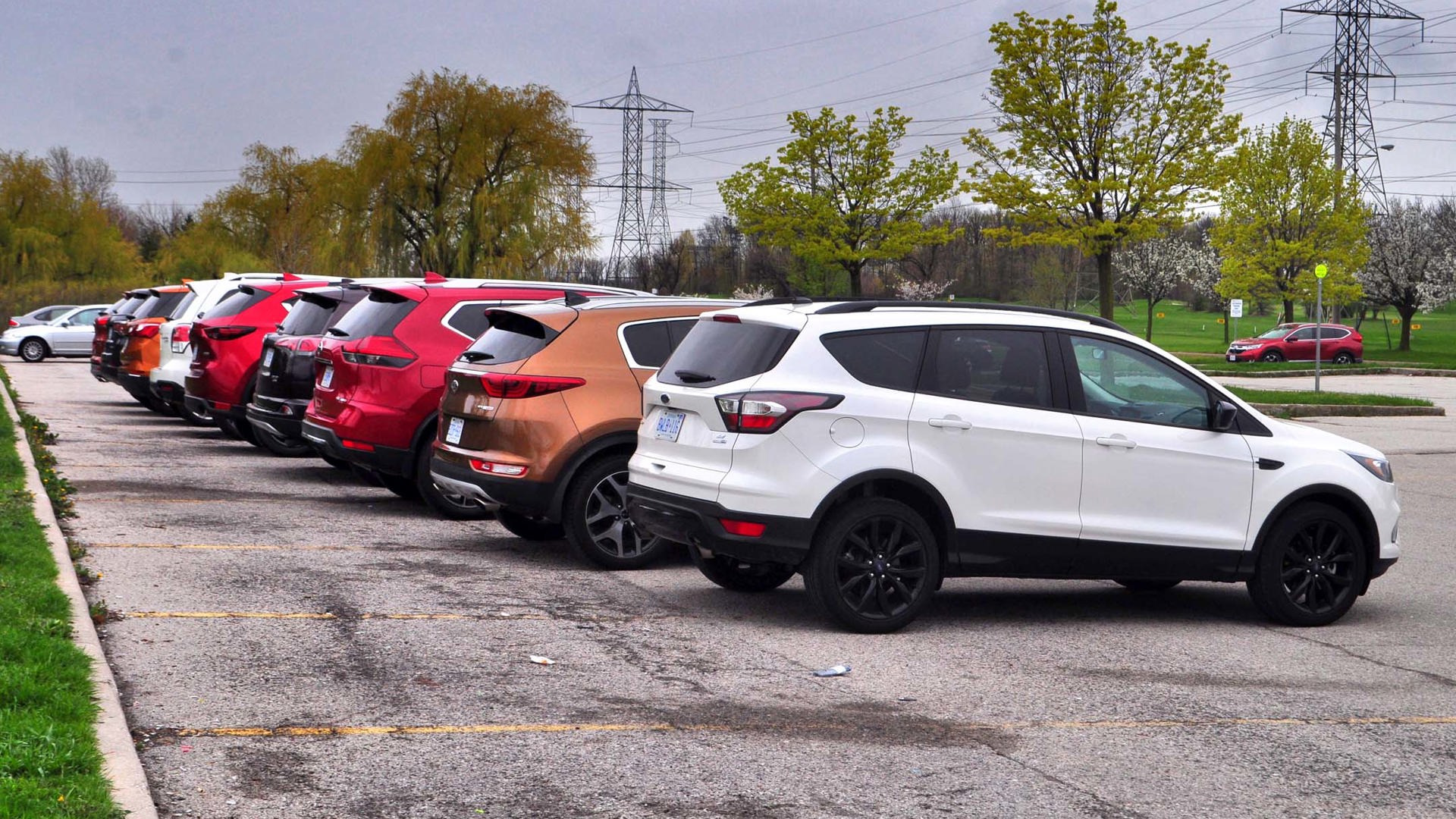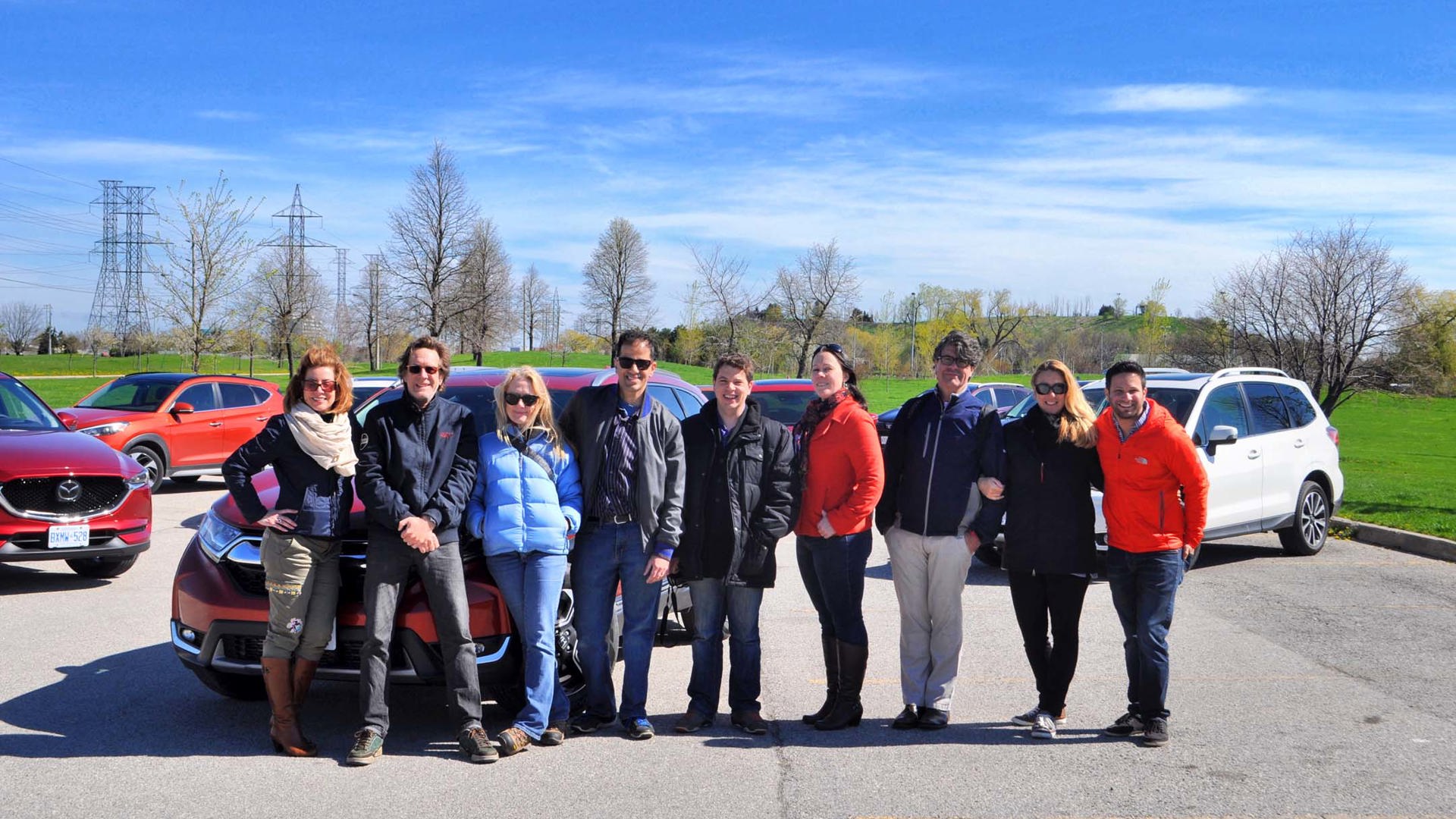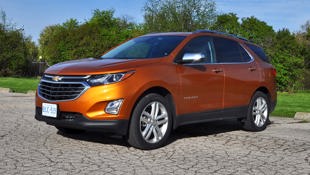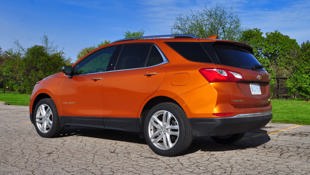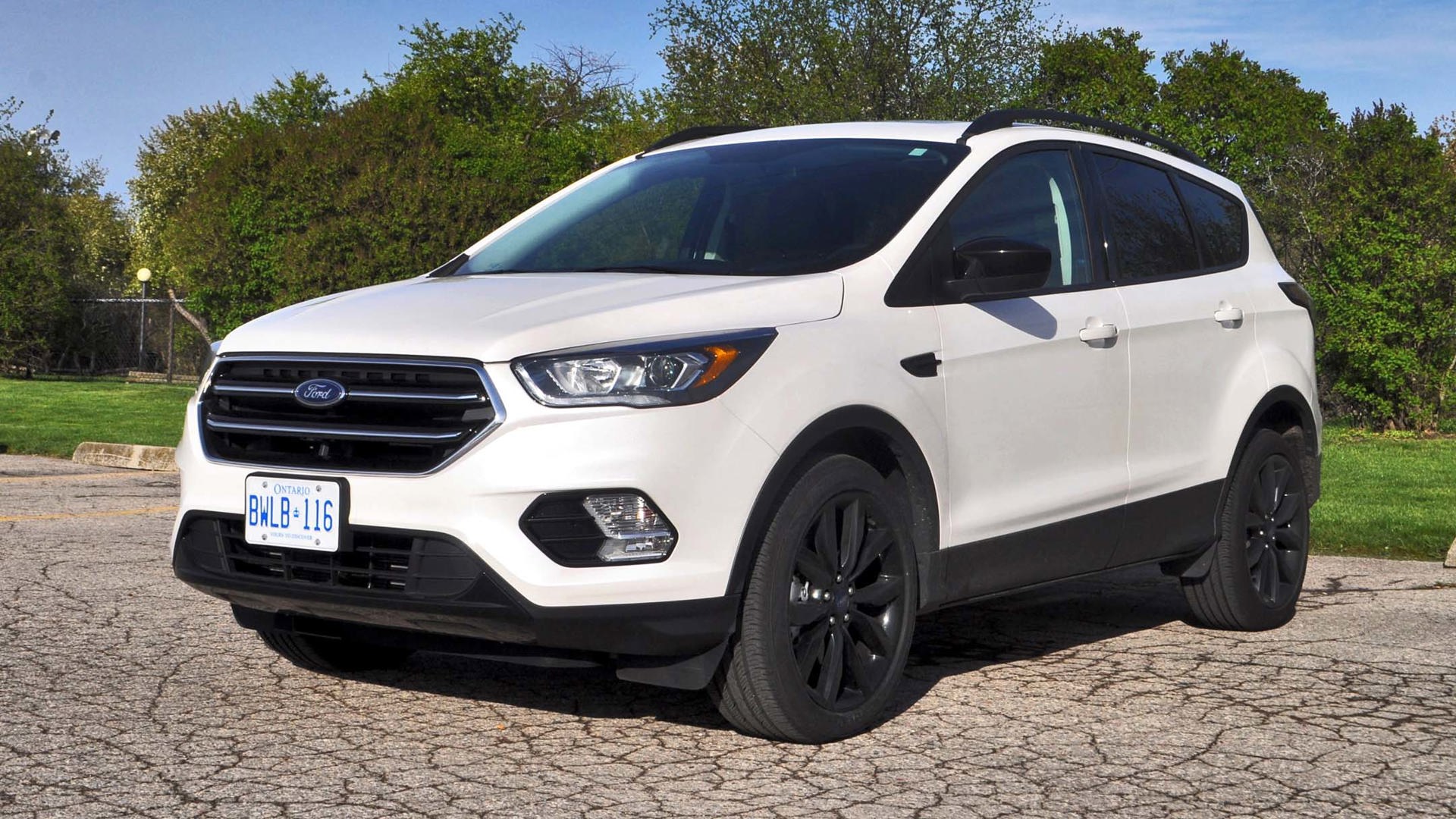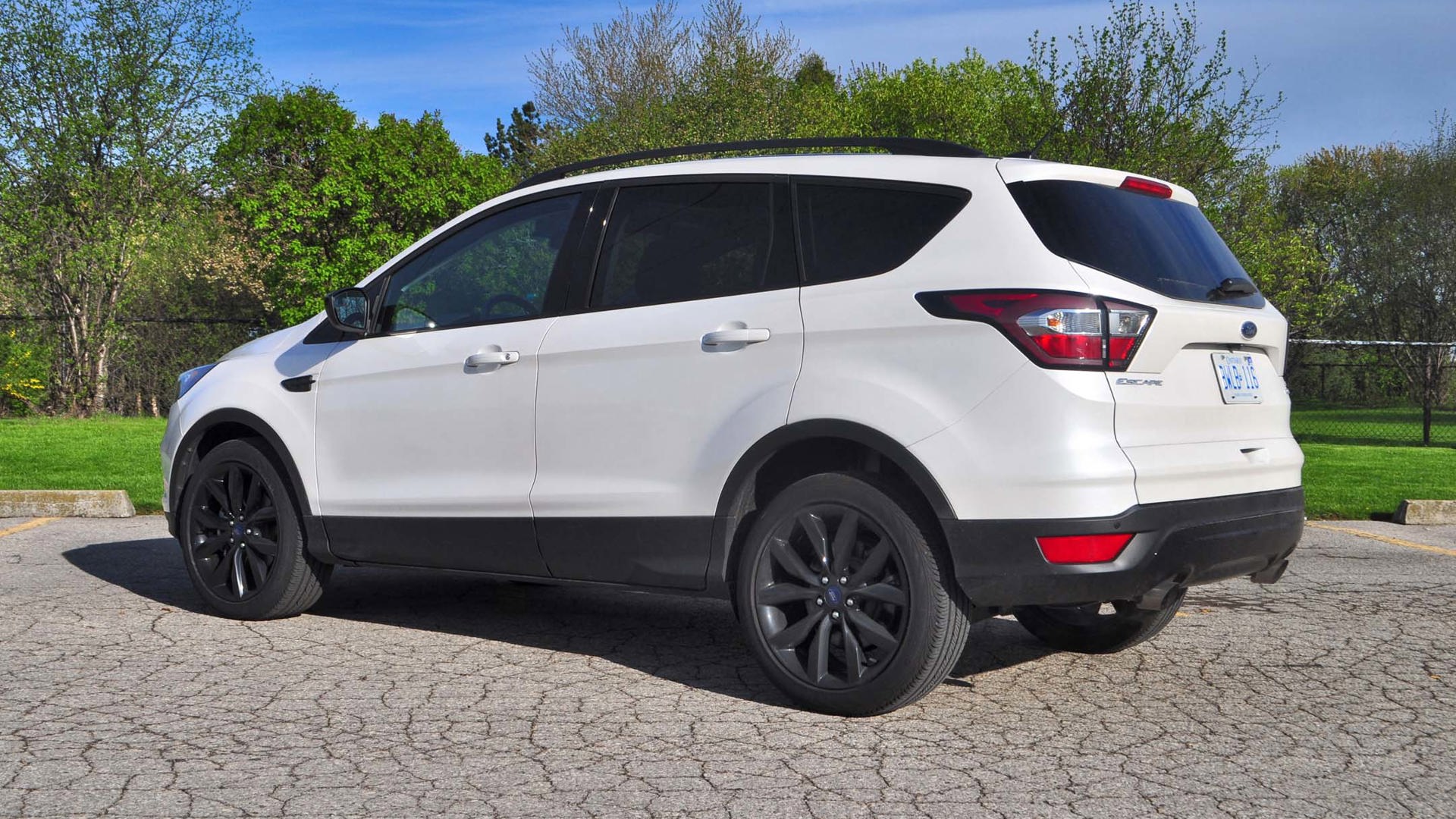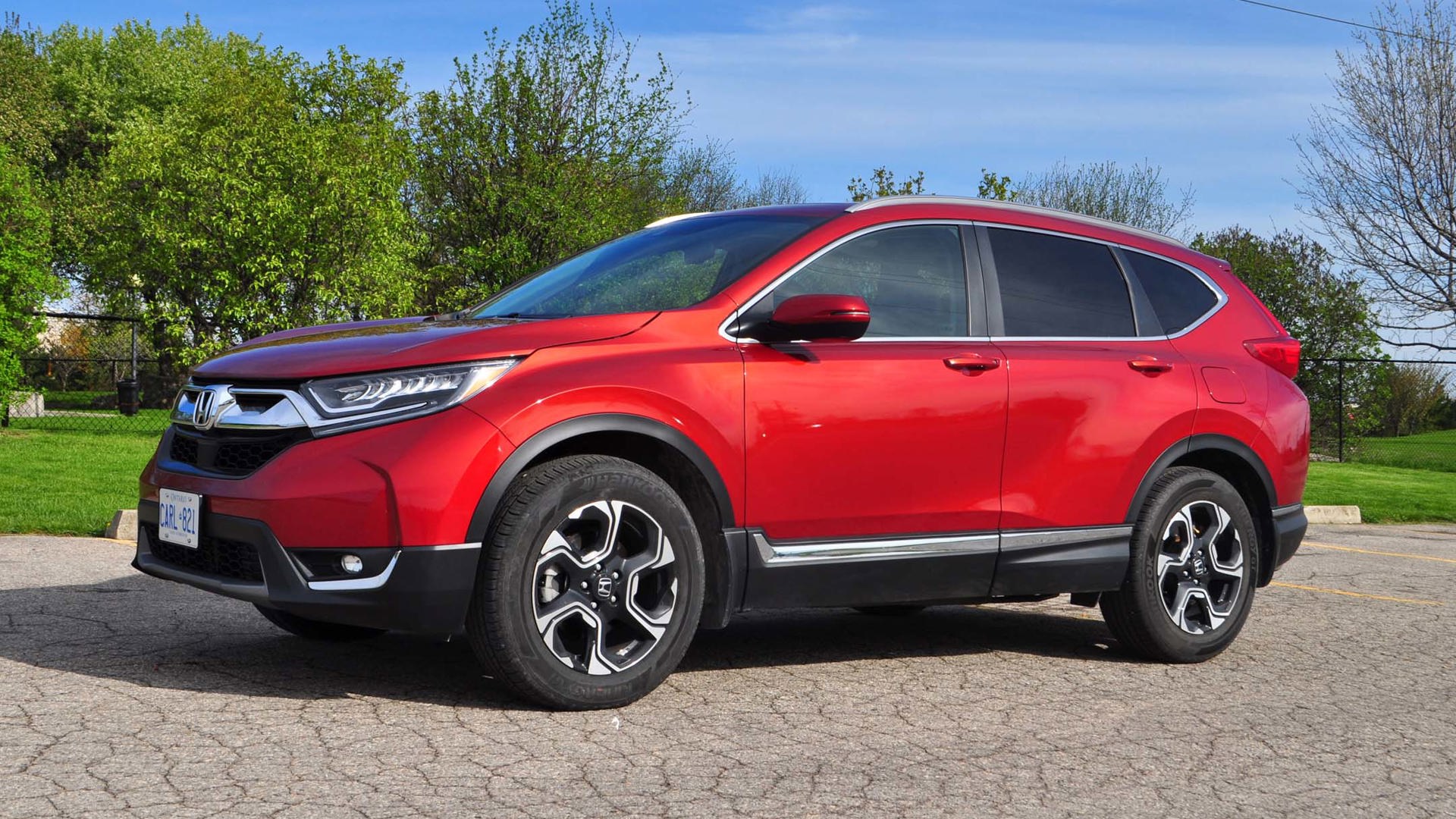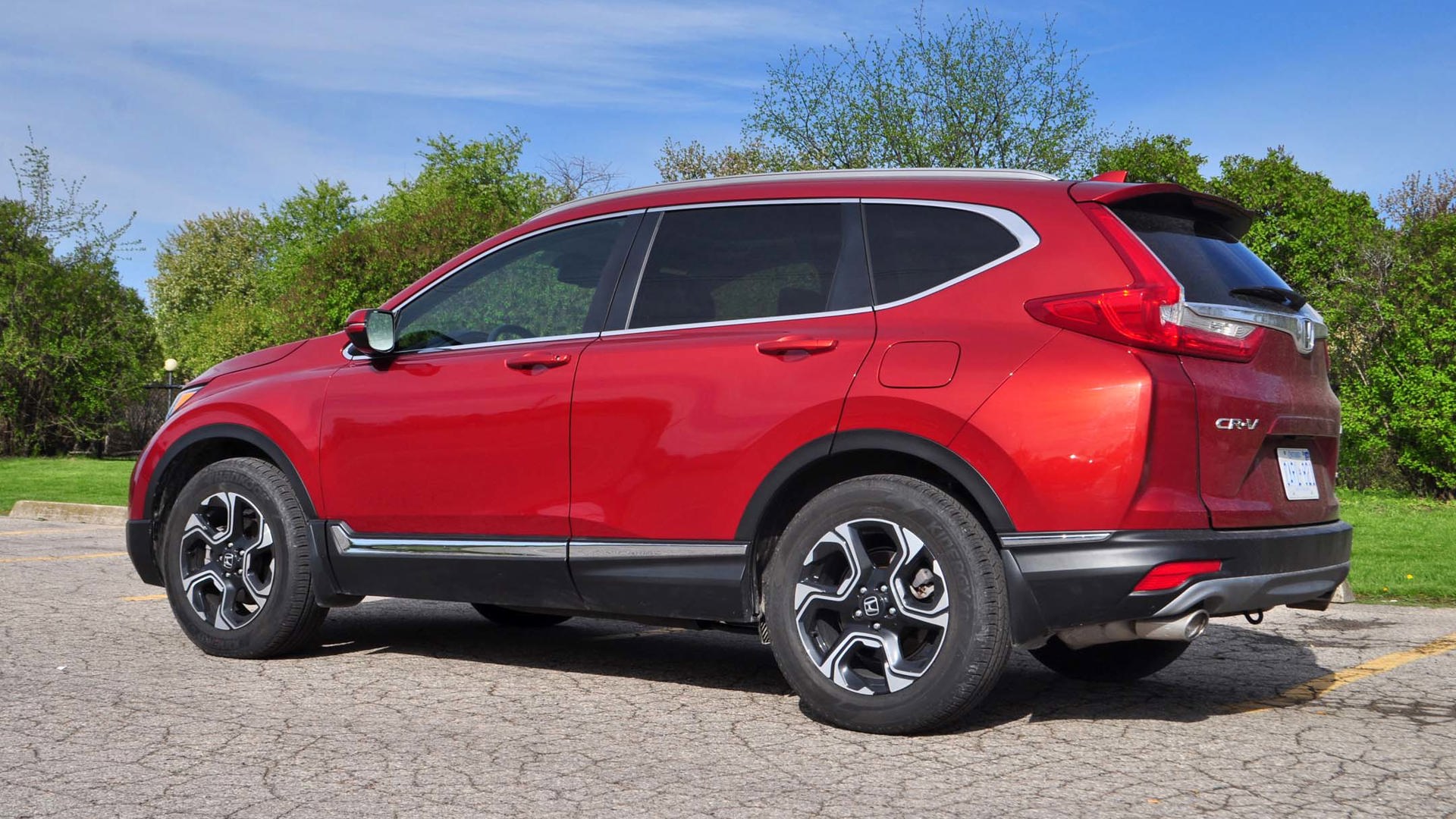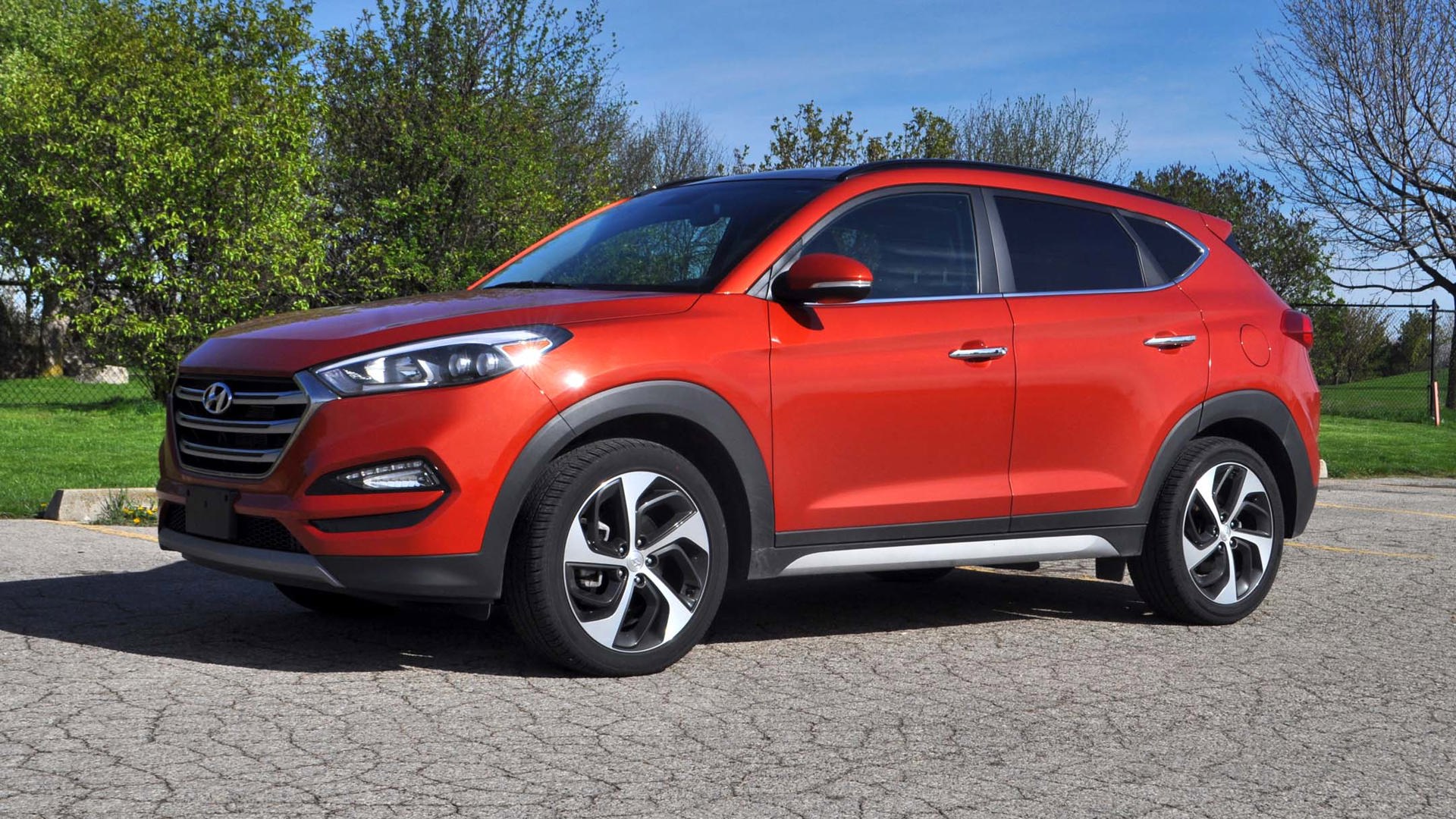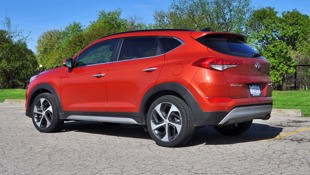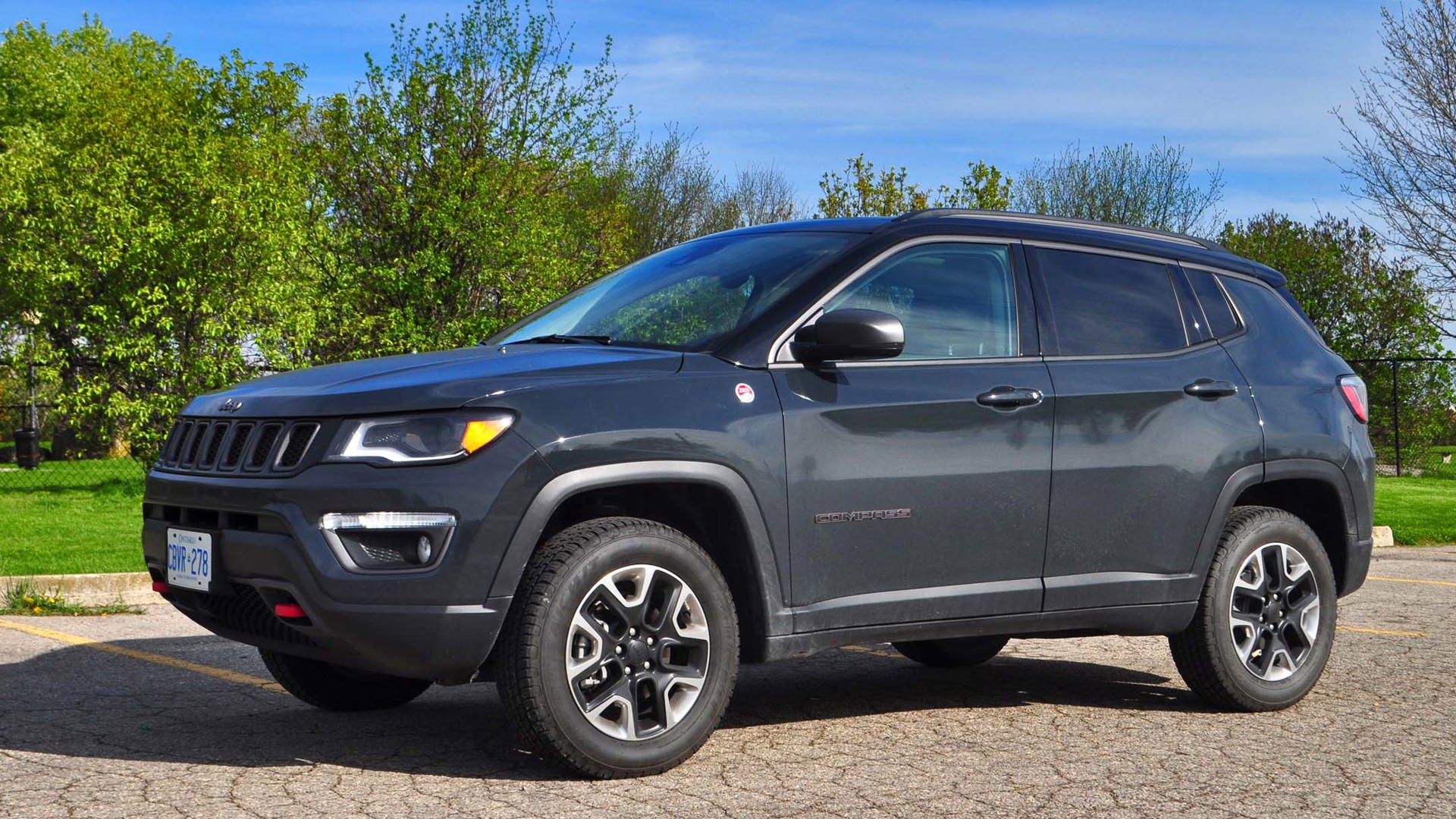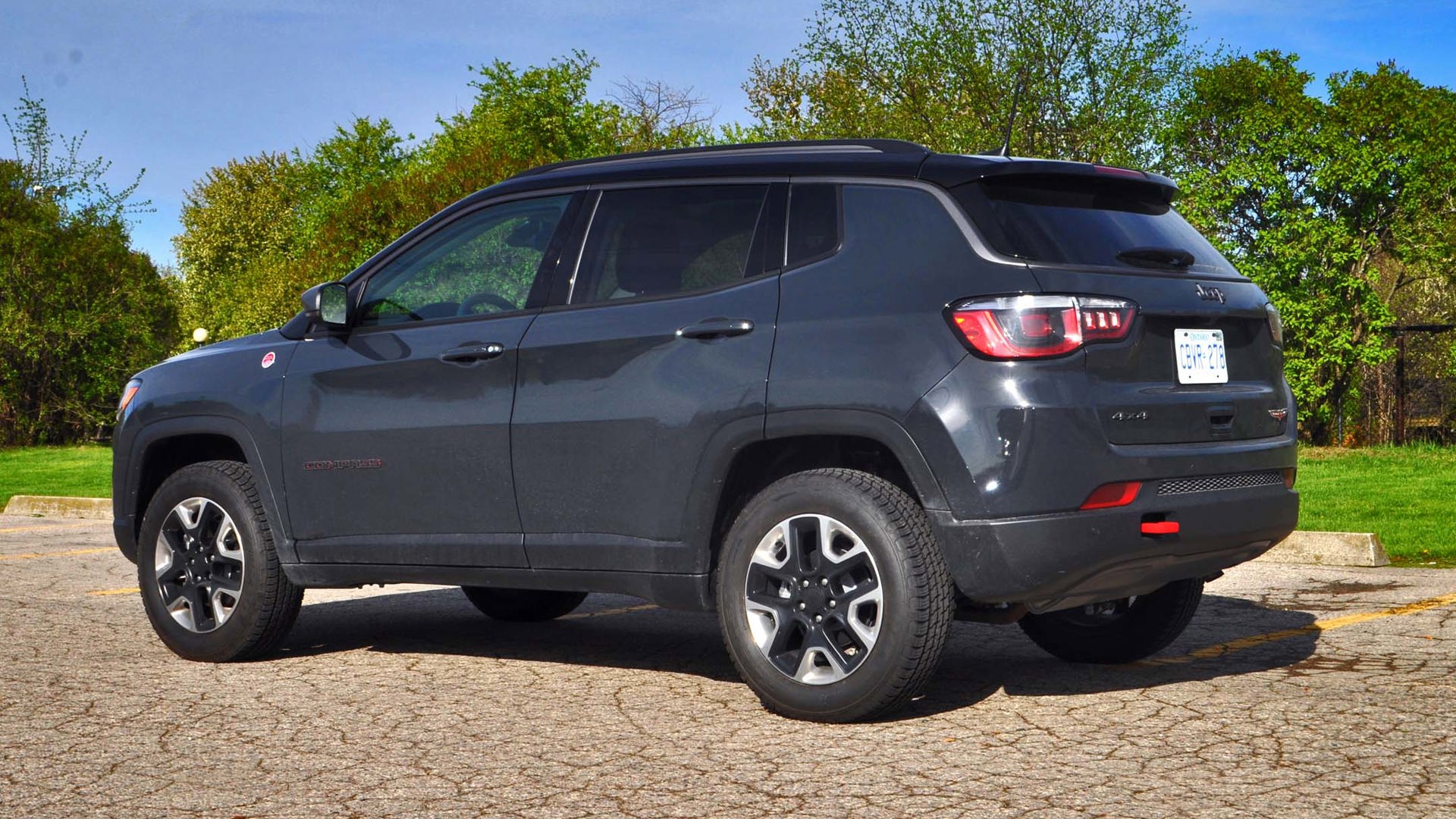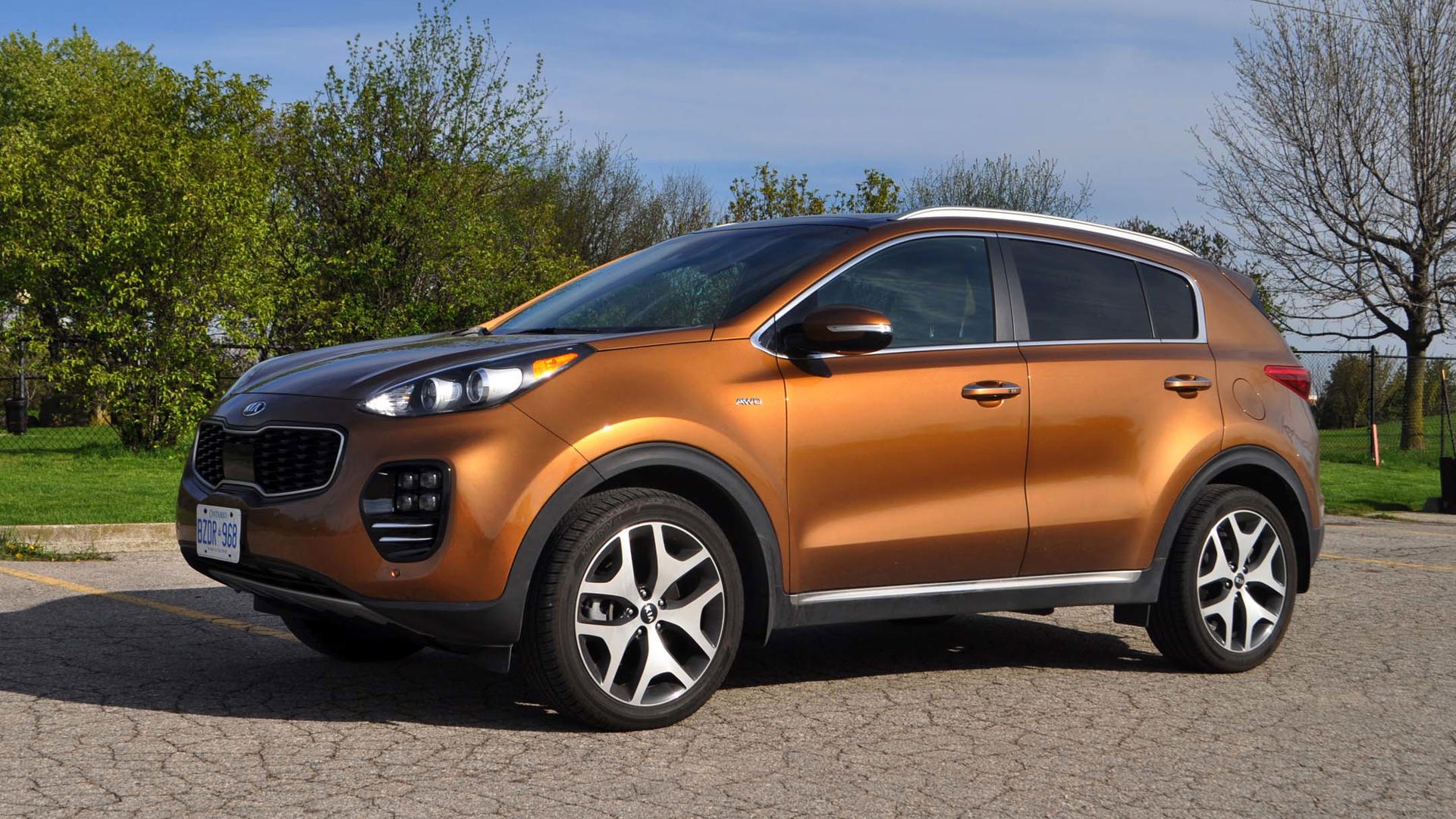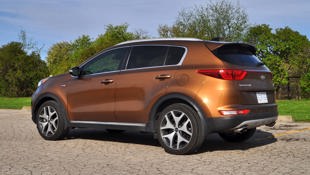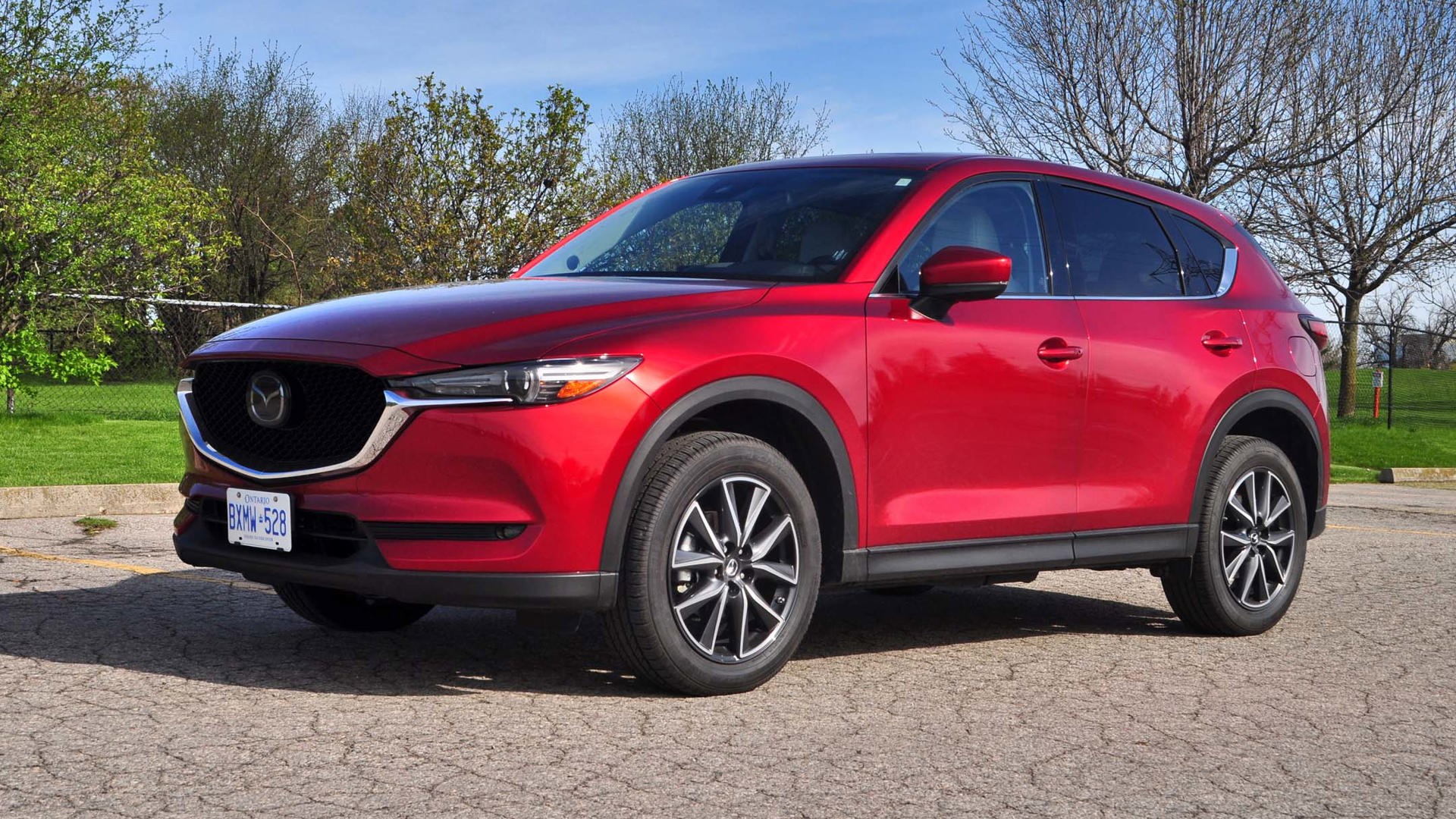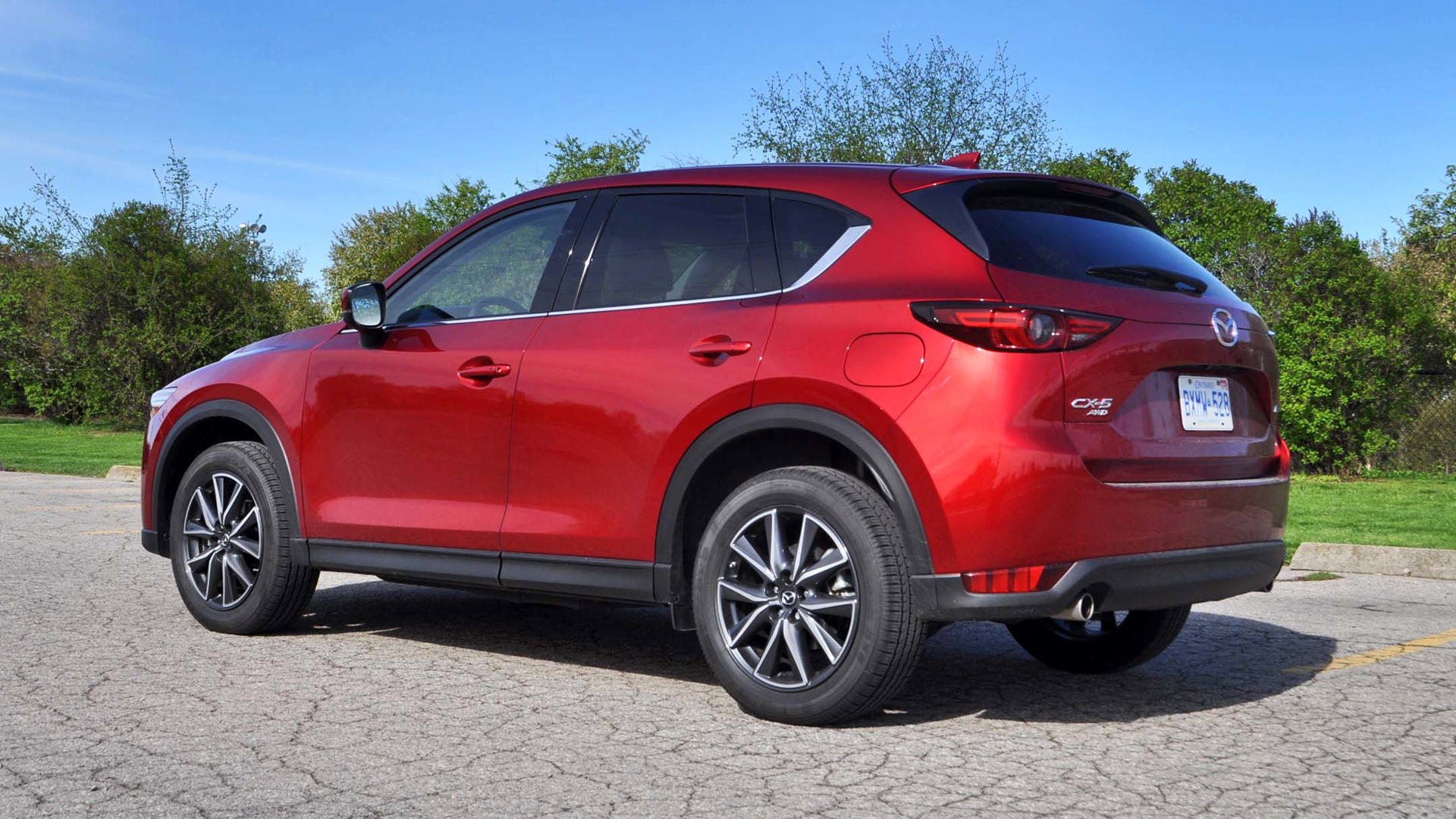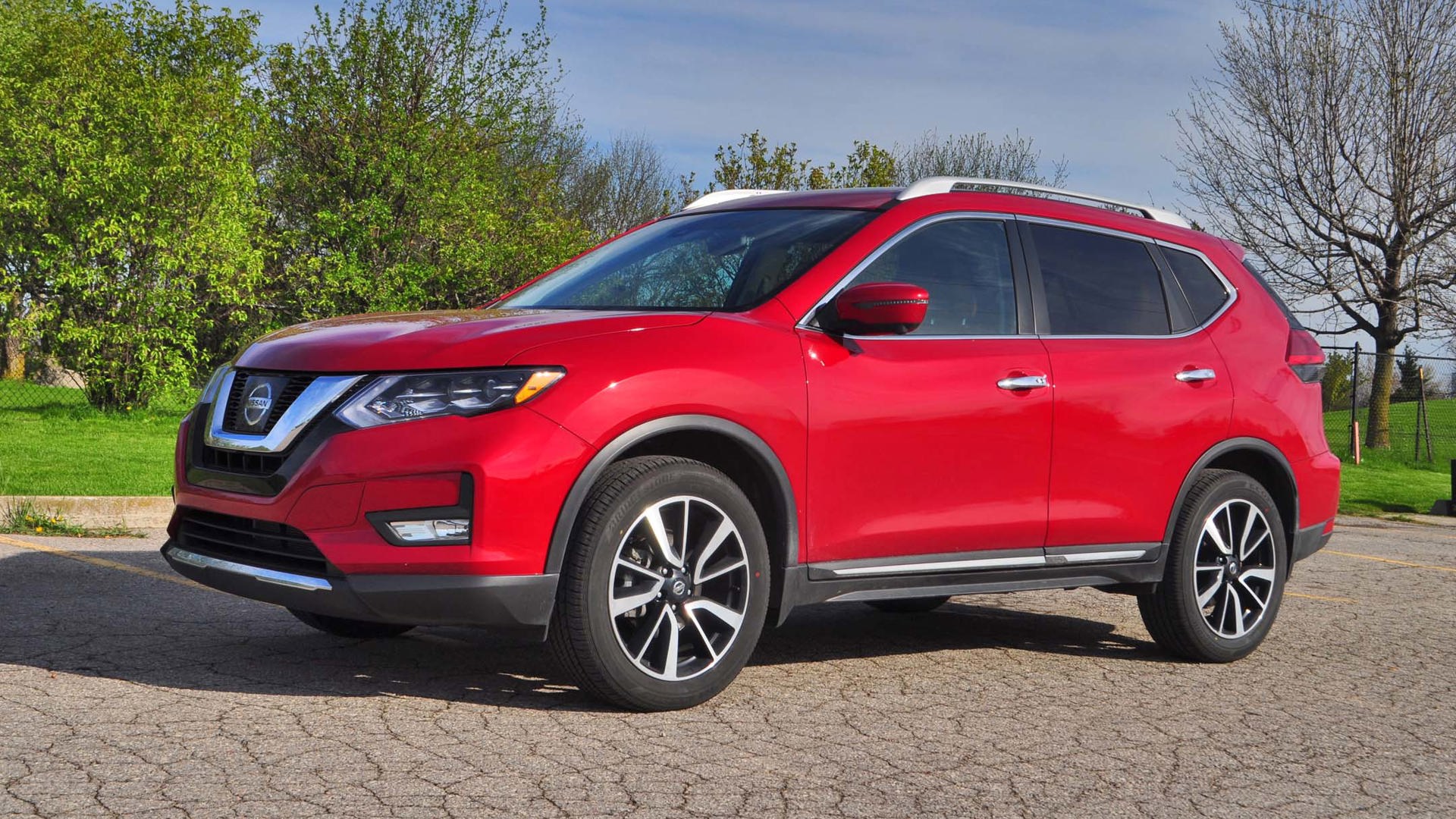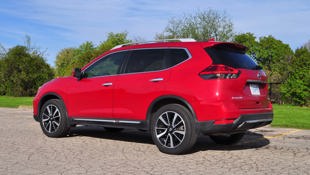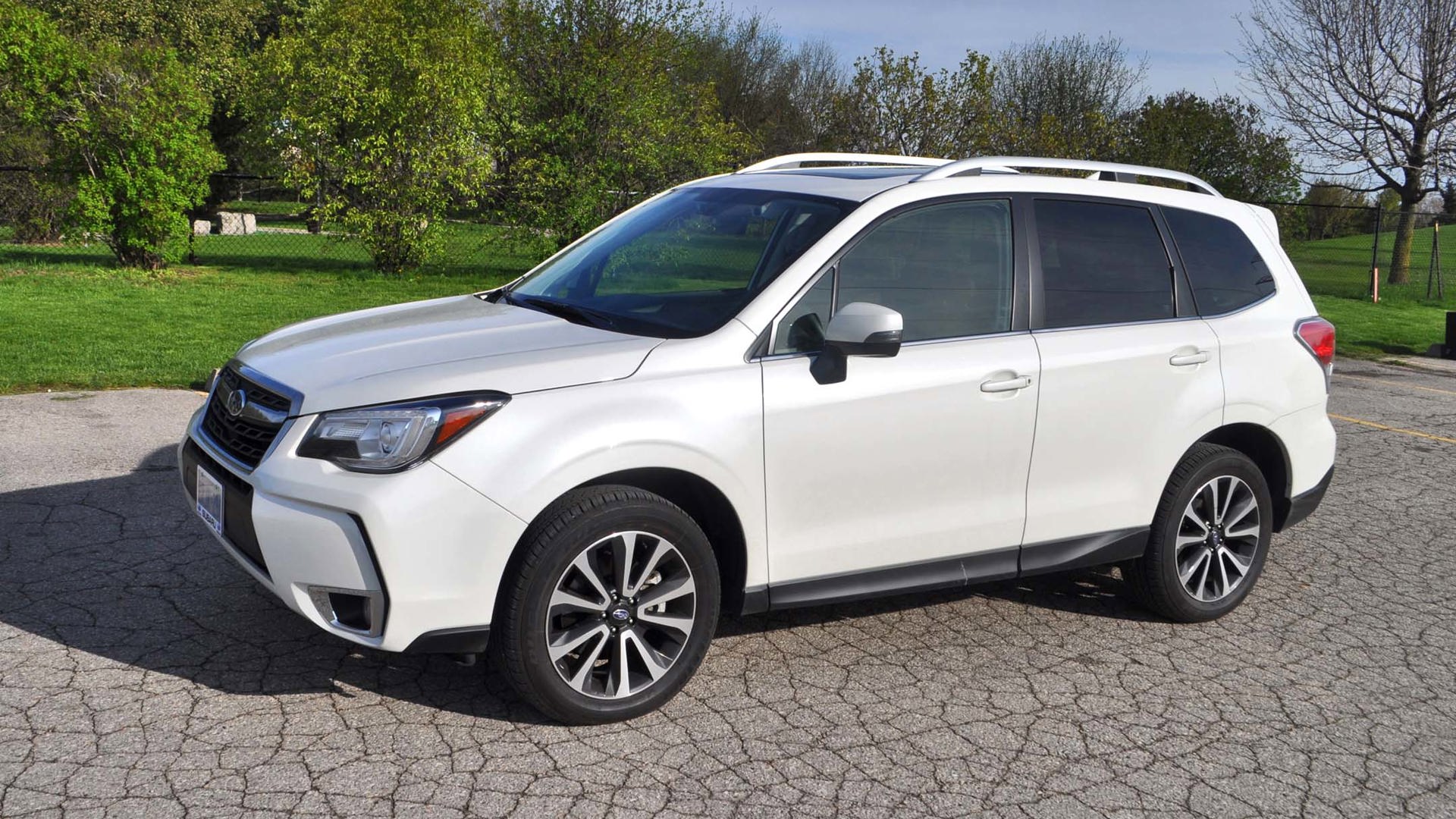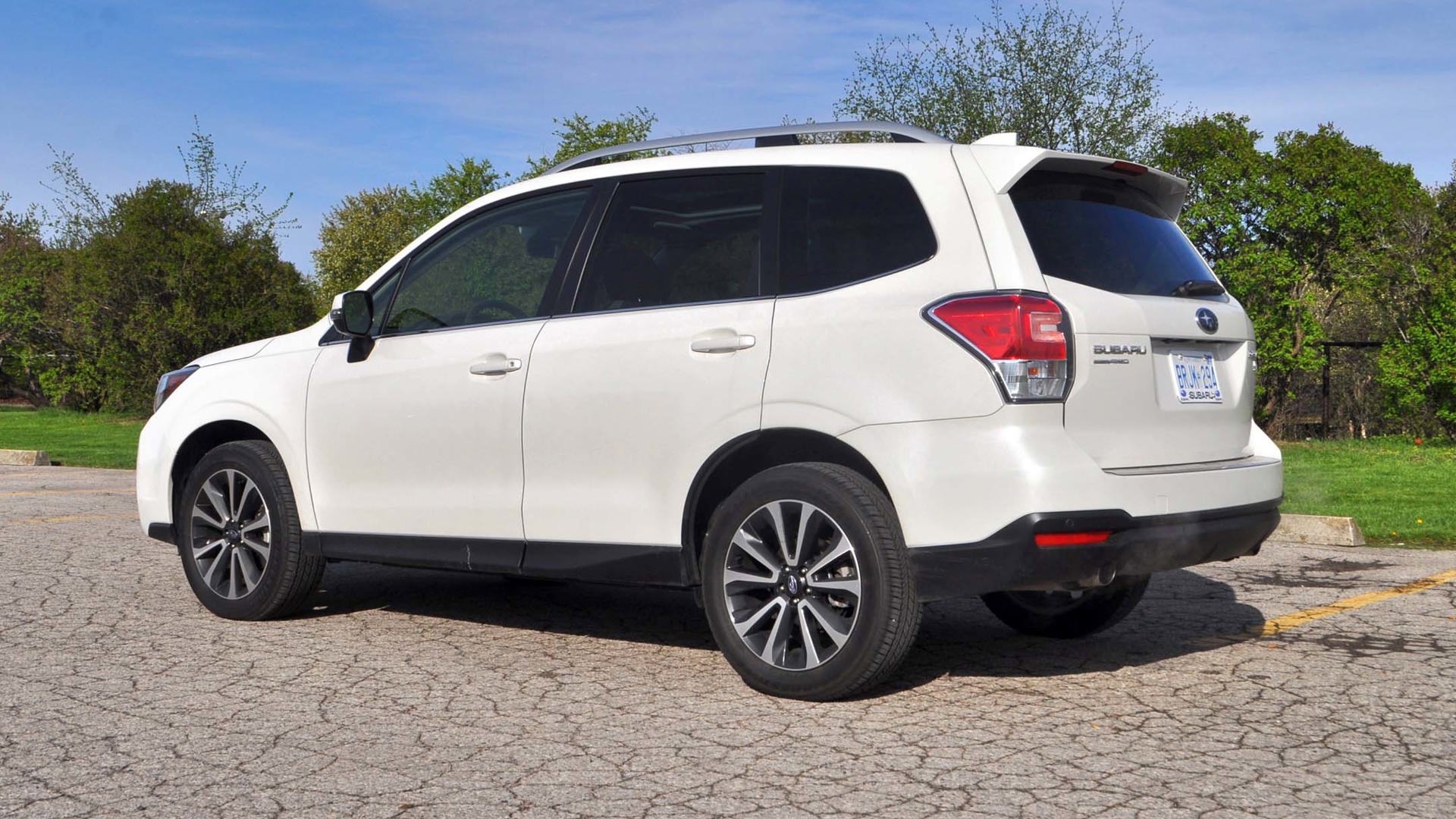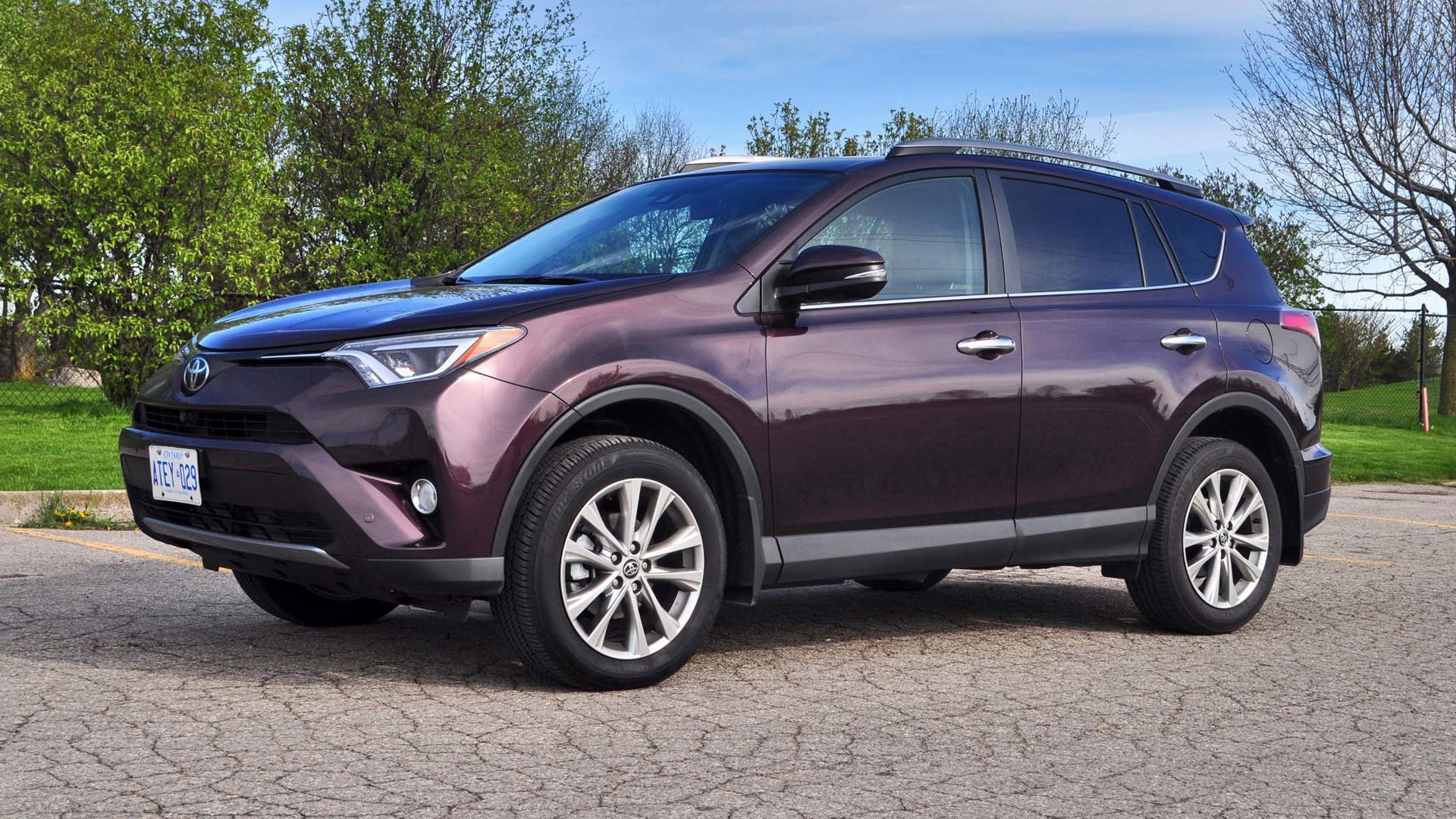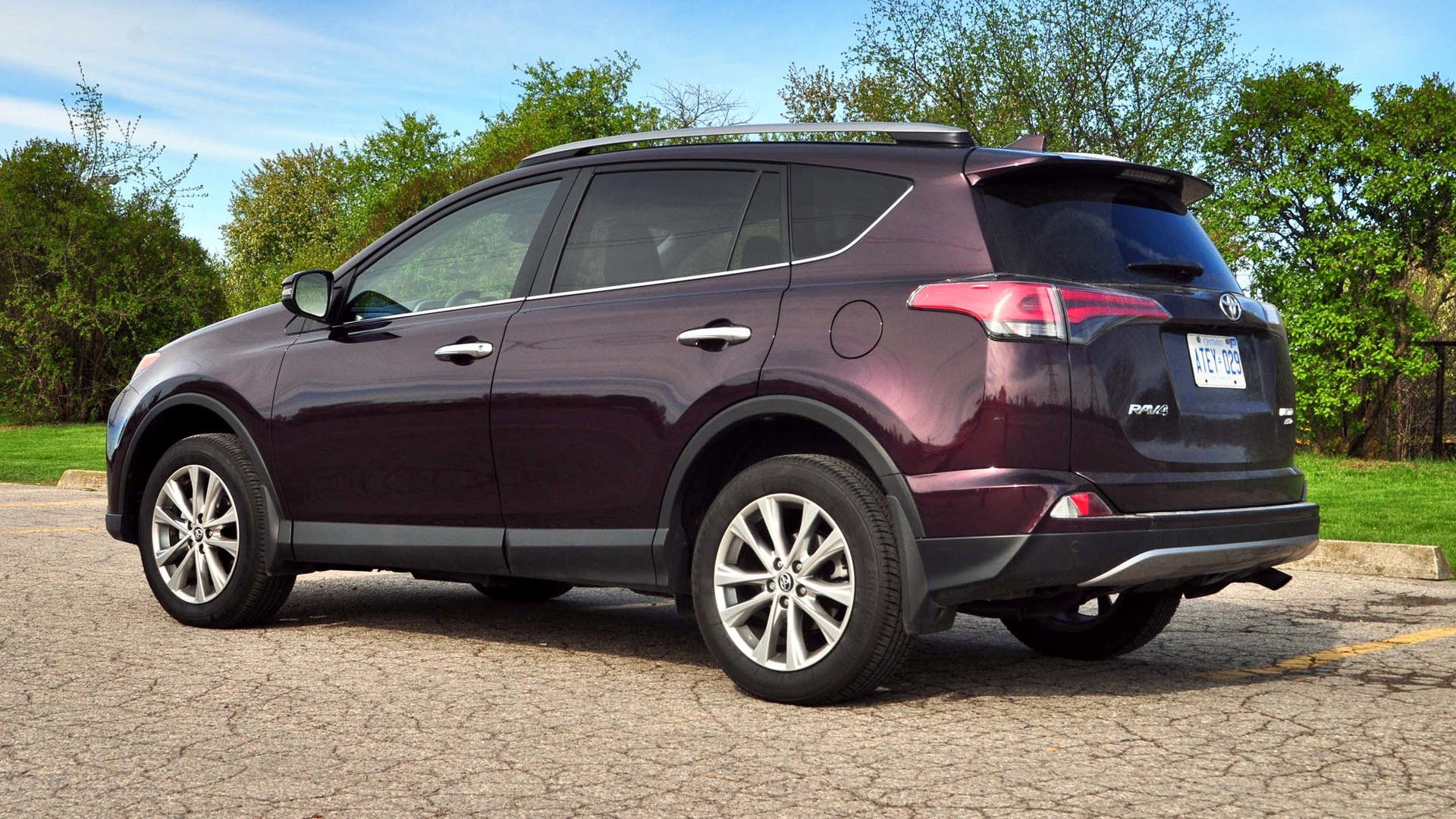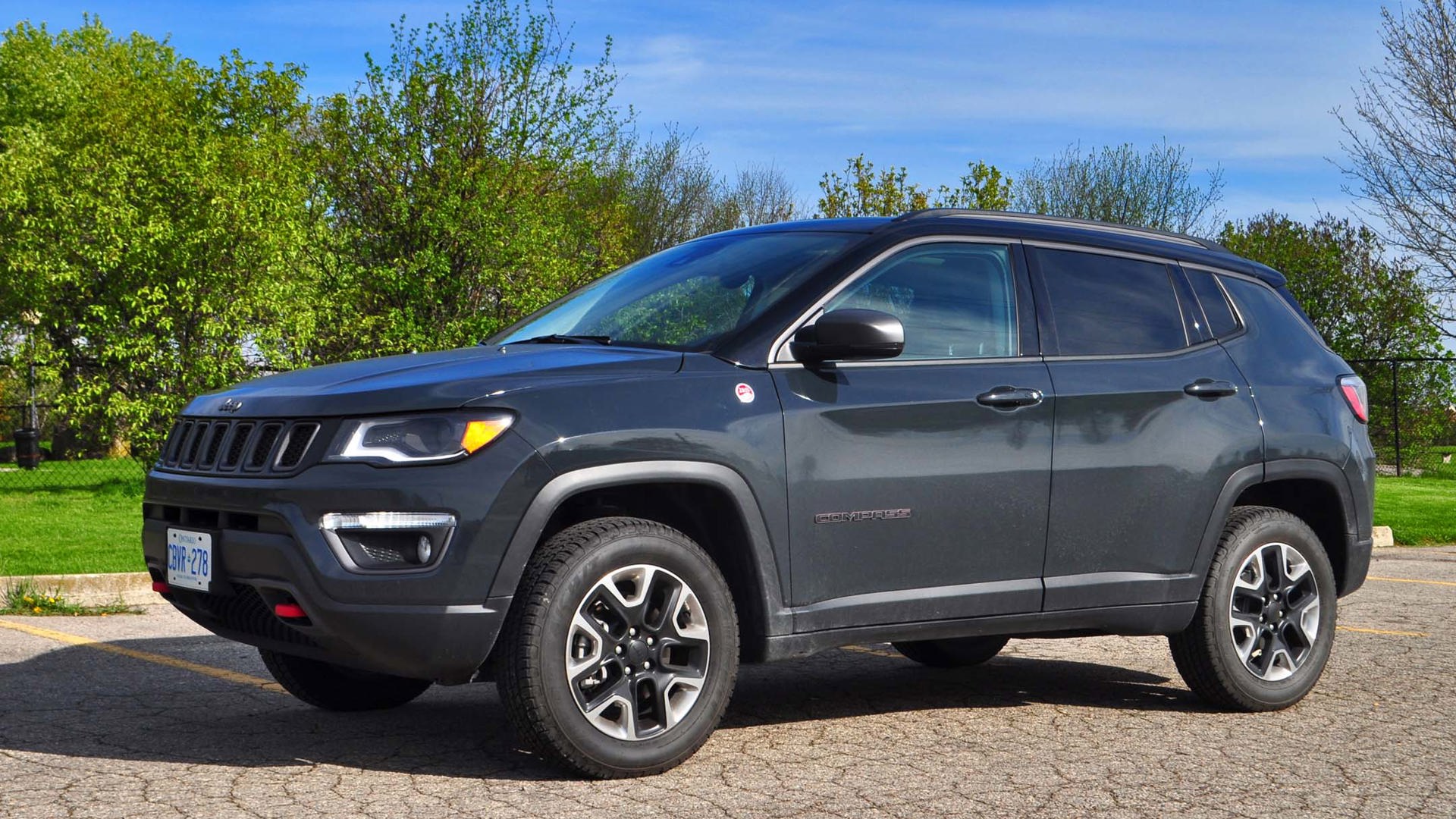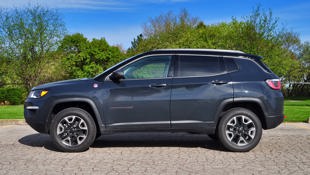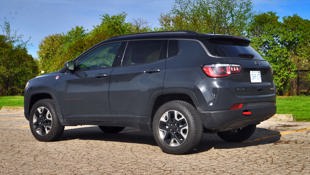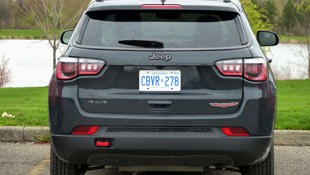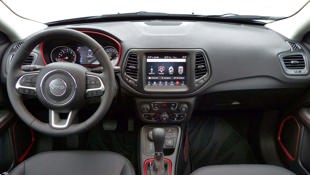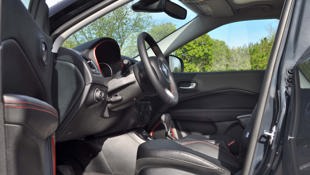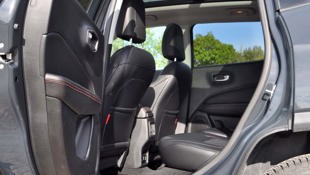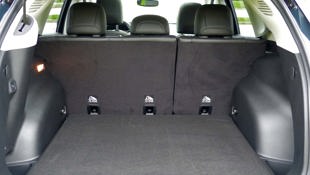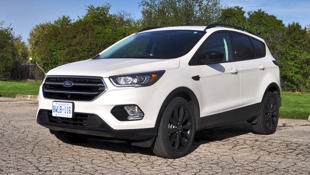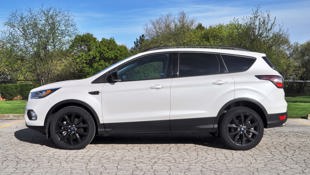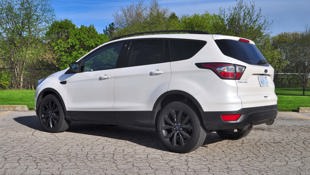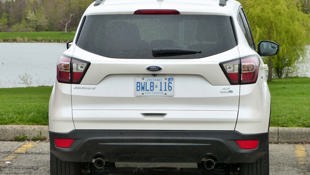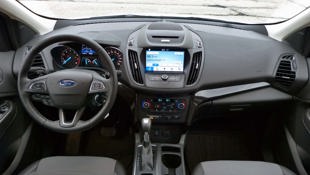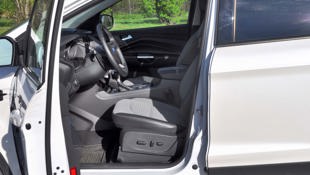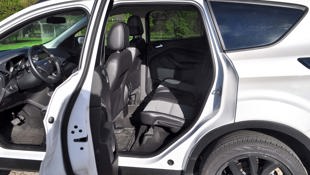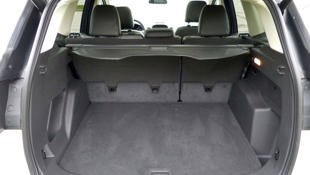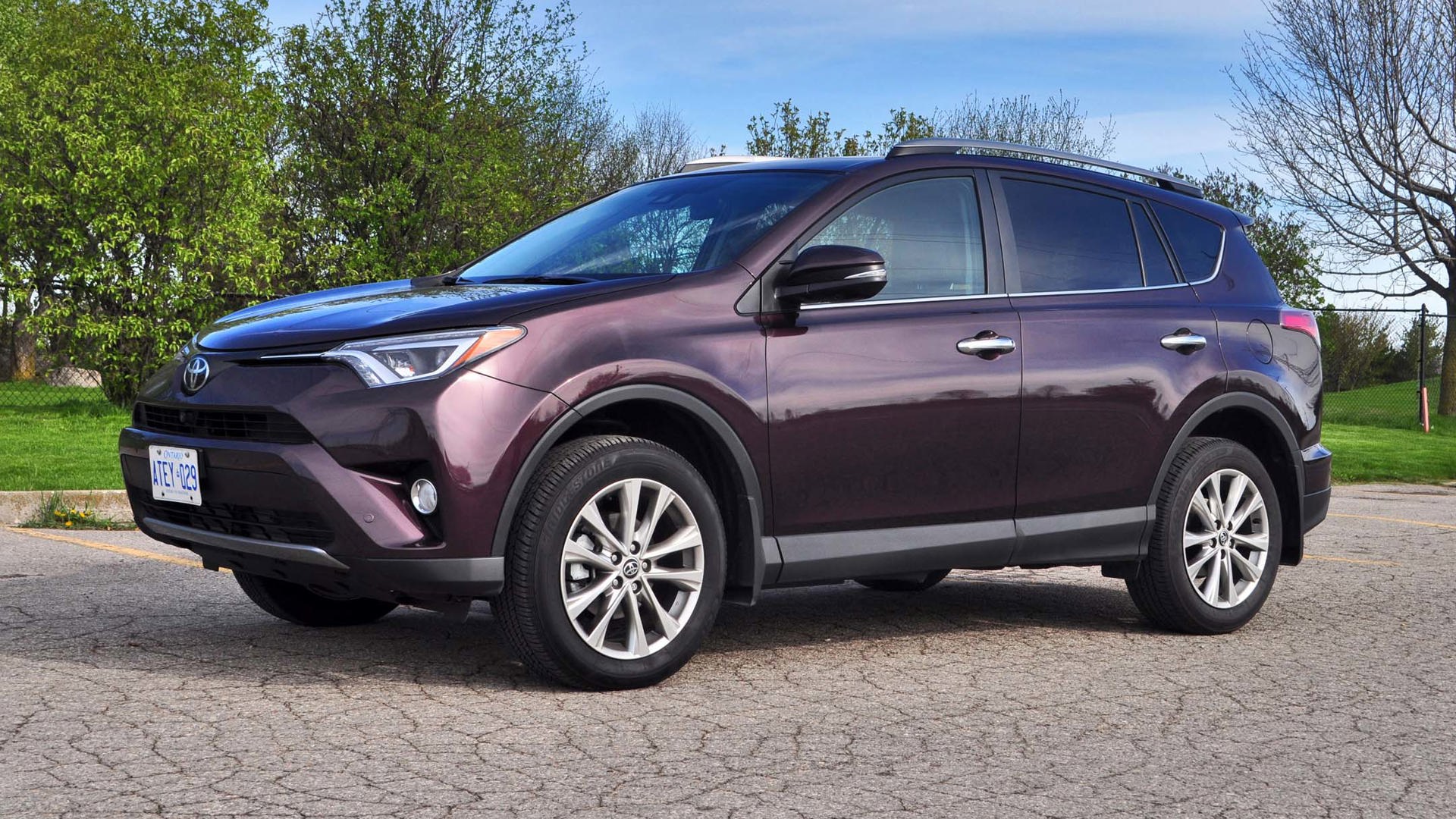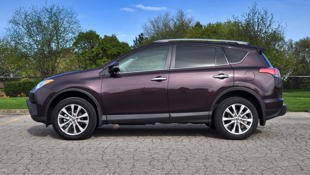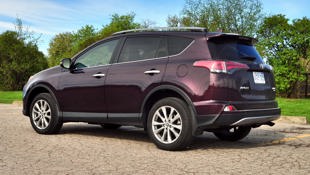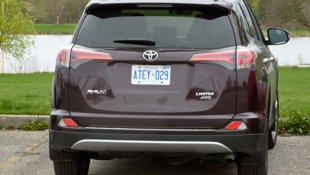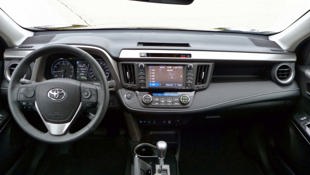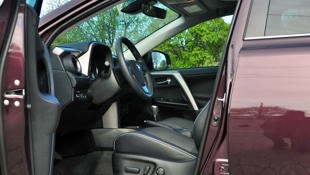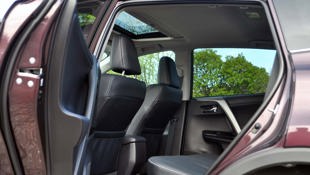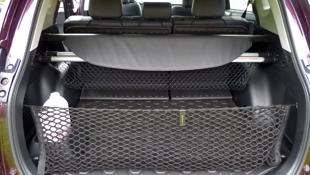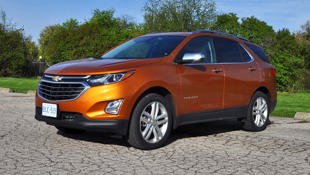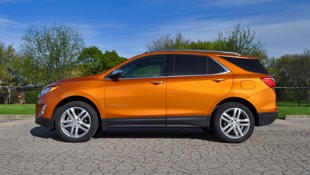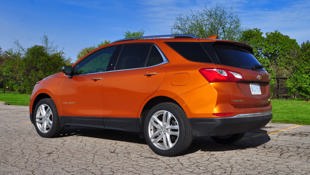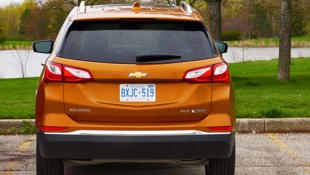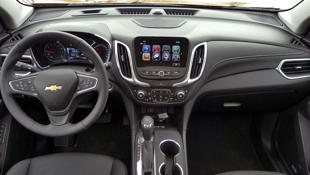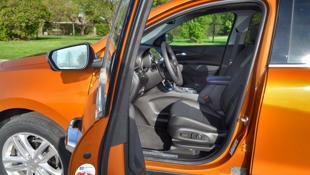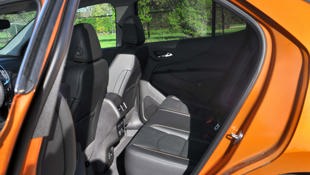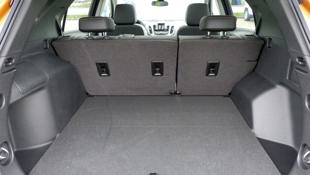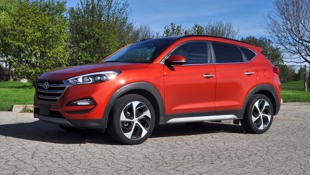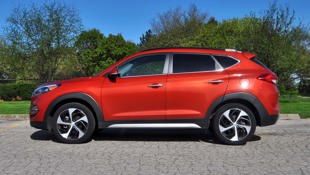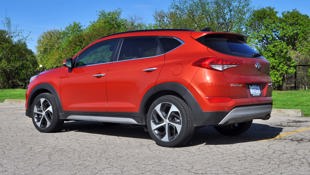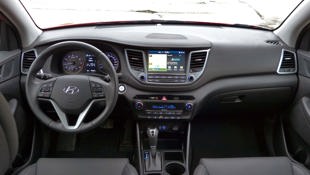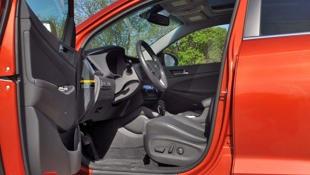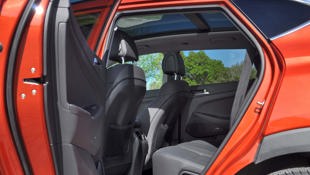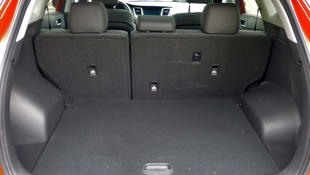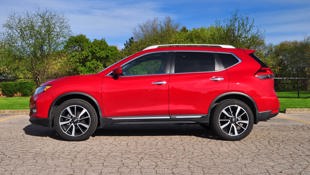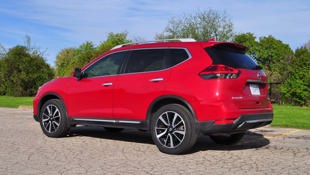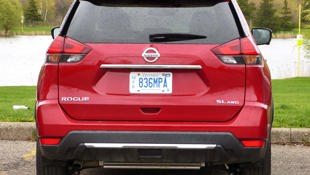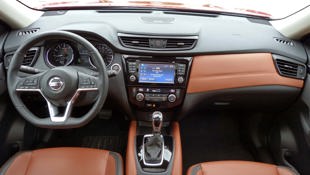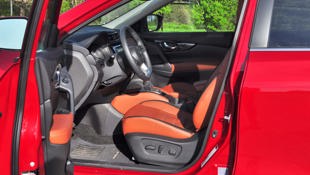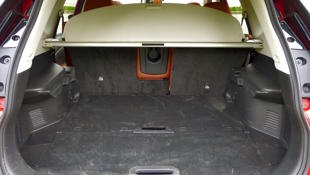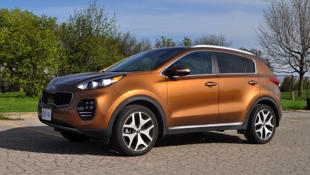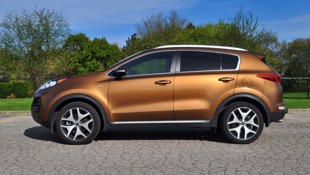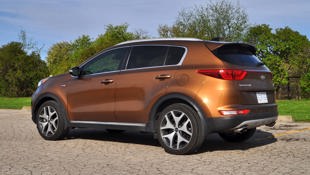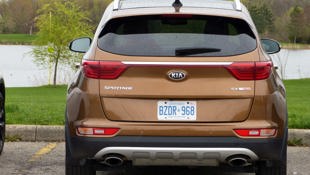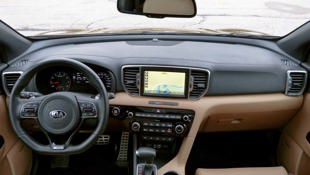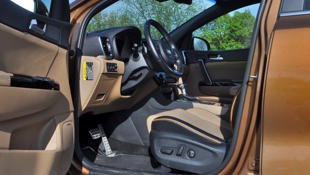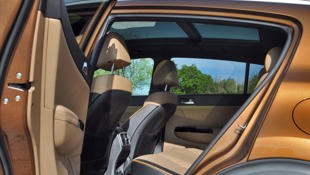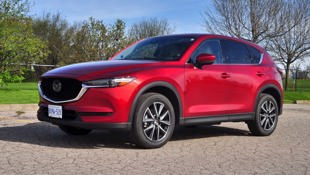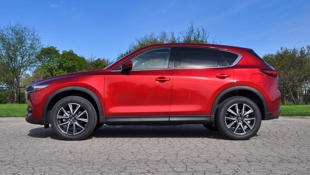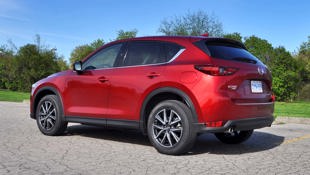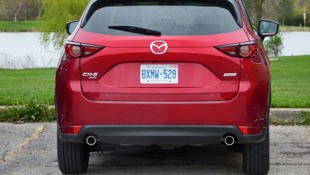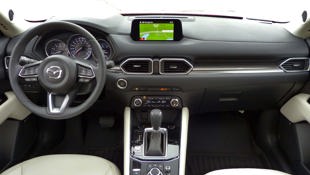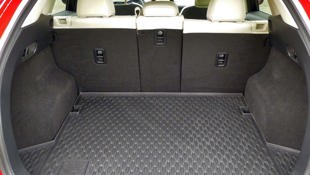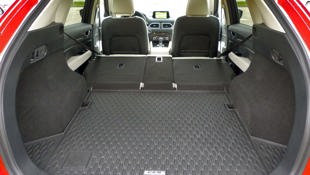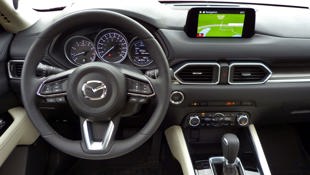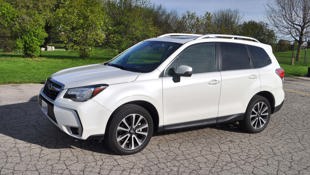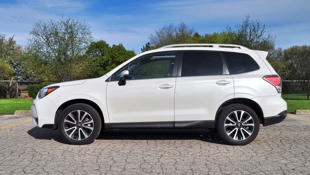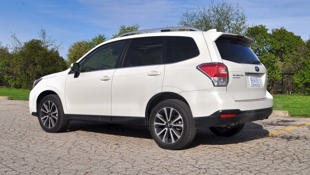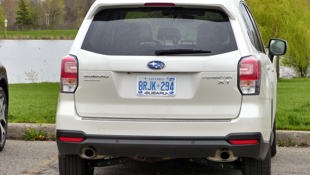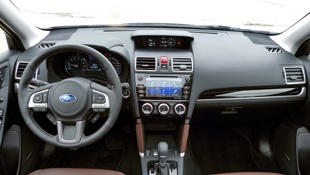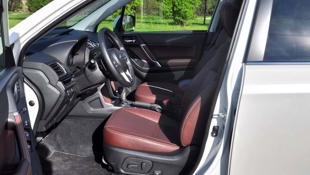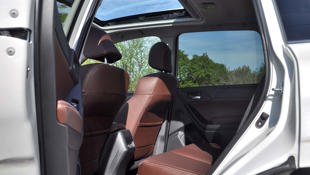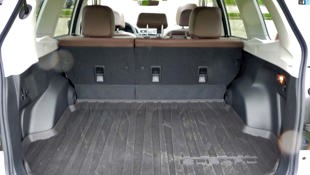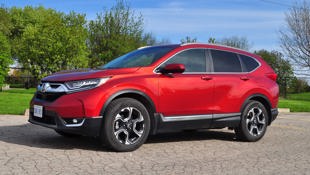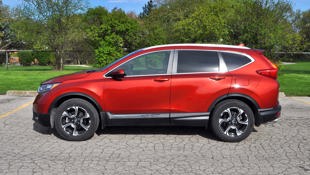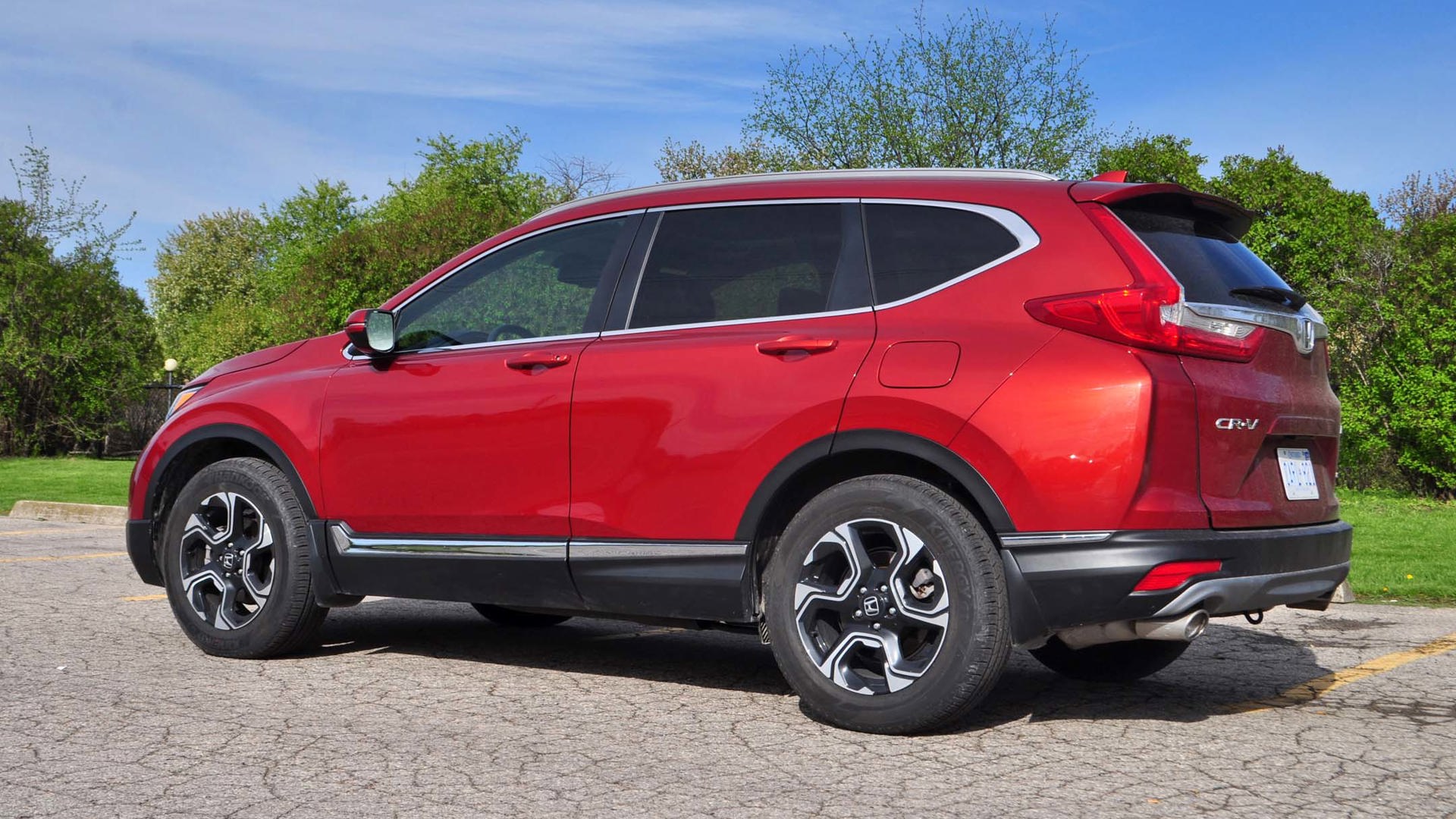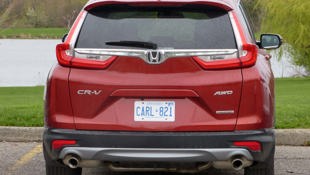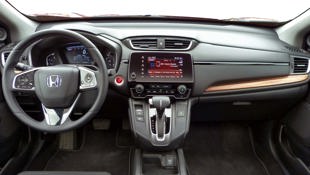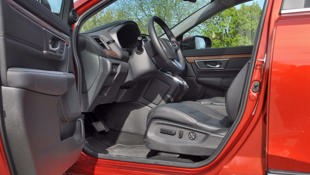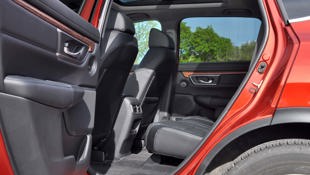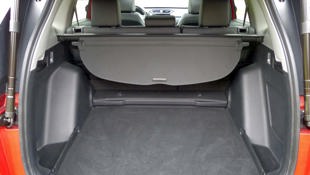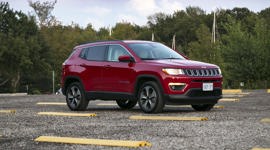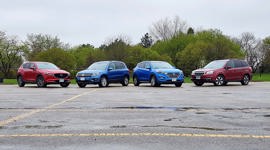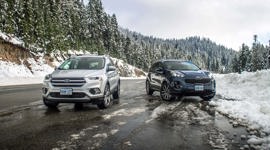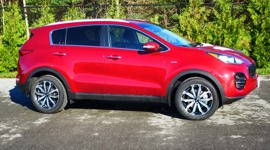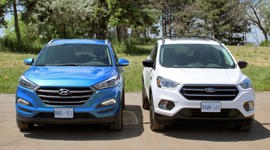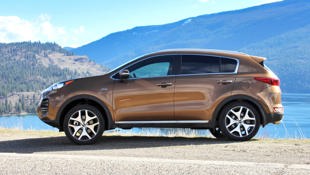Comparison Data
|
2017 Jeep Compass Trailhawk 4x4
|
2017 Honda CR-V Touring
|
2017 Mazda CX-5 GT
|
2018 Chevrolet Equinox Premier 1.5T AWD
|
2017 Ford Escape SE 4WD 1.5L EcoBoost
|
2017 Subaru Forester 2.0XT Limited w/ Tech CVT
|
2017 Toyota RAV4 AWD Limited
|
2017 Nissan Rogue SL Platinum
|
2017 Kia Sportage SX Turbo
|
2017 Hyundai Tucson 1.6T Limited AWD
|
|---|---|---|---|---|---|---|---|---|---|
|
Engine Displacement
2.4L
|
1.5L Turbo
|
2.5L
|
1.5L Turbo
|
1.5L Turbo
|
2.0L
|
2.5L
|
2.5L
|
2.0L Turbo
|
1.6L Turbo
|
|
Engine Cylinders
I4
|
I4
|
I4
|
I4
|
I4
|
H4
|
I4
|
I4
|
I4
|
I4
|
|
Peak Horsepower
180 @ 6,400 rpm
|
190 @ 5,600 rpm
|
187 @ 6,000 rpm
|
170 @ 5,600 rpm
|
179 @ 6,000 rpm
|
250 @ 5,600 rpm
|
176 @ 6,000 rpm
|
170 @ 6,000 rpm
|
237 @ 6,000 rpm
|
175 @ 5,500 rpm
|
|
Peak Torque
175 @ 3,900 rpm
|
179 @ 2,000 rpm
|
185 @ 4,000 rpm
|
203 @ 2,500 rpm
|
177 @ 2,500 rpm
|
258 @ 2,000 rpm
|
172 @ 4,100 rpm
|
175 @ 4,400 rpm
|
260 @ 1,450 rpm
|
195 @ 1,500 rpm
|
|
Fuel Economy
10.8 / 7.8 / 9.5
|
8.7 / 7.2 / 8.0
|
10.2 / 8.3 / 9.3
|
9.8 / 7.9 / 8.9
|
10.7 / 8.3 / 9.6
|
10.2 / 8.6 / 9.5
|
10.7 / 8.4 / 9.7
|
9.6 / 7.4 / 8.6
|
11.9 / 10.2 / 11.1
|
9.9 / 8.5 / 9.3
|
|
Cargo Space
800 / 1,700
|
1,065 / 2,146
|
875 / 1,687
|
892 / 1,804
|
964 / 1,925
|
892 / 1,940
|
1,090 / 2,080
|
1,112 / 1,982
|
868 / 1,703
|
877 / 1,752
|
|
Base Price
$32,895
|
$38,290
|
$34,700
|
$34,195
|
$29,799
|
$39,495
|
$38,205
|
$35,698
|
$39,595
|
36,499
|
|
A/C Tax
$100
|
$100
|
$100
|
$100
|
$100
|
$100
|
$100
|
$100
|
$100
|
$100
|
|
Destination Fee
$1,795
|
$1,725
|
$1,895
|
$1,700
|
$1,690
|
$1,675
|
$1,785
|
$1,795
|
$1,740
|
$1,805
|
|
Price as Tested
$41,500
|
$40,115
|
$38,745
|
$40,490
|
$38,389
|
$41,270
|
$40,090
|
$38,628
|
$41,635
|
$38,404
|
|
Optional Equipment
$6,710 – Advanced Safety & Lighting Group $995; Safety & Security Group $895; Leather Interior Group $1,500; Navigation Group $700; Popular Equipment Group $500; Dual-pane panoramic sunroof $1,595; Power liftgate $525
|
None
|
$2,050 – Soul Red Crystal Metallic exterior colour $450; Technology Package $1,600
|
$4,495 – True North Edition $5,965; True North Edition Credit –$1,965; Orange Burst Metallic $495
|
$6,800 – White Platinum Metallic Tri-Coat $550; Equipment Group 201A $1,550; Power Liftgate $500; Twin Panel Moonroof $1,750; All-Weather Floor Mats $150; Voice Activated Touch-Screen Navigation System $800; SE Sport Appearance Package $1,500
|
None
|
None
|
$1,035 – Reserve Interior $500; Platinum Package $400; Metallic Pearl Paint $135
|
$200 – Colour Charge $200
|
None
|
It all started with the goal of testing a full menu of reasonably priced compact SUVs, one of the fastest growing segments in Canada. Originally, given the mid- to high-$20k starting price of many of these call-them-what-you-will high-riding hatchbacks (crossovers, CUVs, but we’ve stuck with SUVs), we thought that gathering a group of these vehicles around the $30k mark would be a useful and feasible effort.
Useful, yes, feasible, well....
We quickly realized that once you add in the necessary freight and destination charges, and checked into such base or lightly optioned vehicles available from the manufacturers for testing, pickings in this segment near the $30k mark became relatively slim (okay, closer to none). But after a considerable amount of prodding and occasional OEM cajoling, we did find a group of four all-wheel drive compact utes that all came in close to an as tested price of $35,000, freight included.
The resulting comparison piece can be found here, and was won by the – spoiler alert – Subaru Forester. But the process led us down a path from that appetizer of a comparison to the full smorgasbord of compact SUV goodness found here: ten of the most popular SUVs in the country, including the top sellers that make up a healthy portion of any Google Maps mall or school parking lot image.
Still wanting to maintain some semblance of our original value goal, we aimed to keep these participants as close to the $40,000 mark as possible. With only a roughly $1,700 swing in either direction of that median, we gathered a fairly even mix of mid- to upper-level trims for all of these market rivals.
Thus we have a range here that starts with a mid-level 2017 Ford Escape SE that came in at $38,389 as tested (after freight), on up to a fully loaded $41,635 Kia Sportage SX Turbo. In between, in ascending order of as-tested price, came the Nissan Rogue, Mazda CX-5, Toyota RAV4, all-new Honda CR-V, revised 2018 Chevrolet Equinox, Hyundai Tucson, Subaru Forester, and off-road-ready Jeep Compass Trailhawk.
So who won this one? Read on to find out.
Tenth: 2017 Jeep Compass Trailhawk 4x4 – Nadine Filion
There’s a loser in every comparo. Usually, it’s a vehicle at the end of its life cycle and just about to get a new generation. Not this time: our tenth and dead-last position is held by the brand-new 2017 Jeep Compass.
Having gone a decade without big changes, the Compass and its twin Jeep Patriot were the sub-compact, entry-level 4x4s of the Jeep family. You want to find an SUV cheap? The duo was your best bet, although not the most stylish ones. (In truth, it was still the case for the 2016 model, with heavy discounts bringing down the price tag even further).
But the story is no longer true for the totally revamped Compass. The second generation of the SUV – adios, Jeep Patriot – is bigger, bolder and pricier. Now starting at $24,900, rising to the sweet spot of the compact competition, the vehicle leaves the “cheap” spot below $20,000 to the smaller Jeep Renegade.
In our comparo, where it showed up in its well-equipped $41,500 Trailhawk version, the Jeep Compass scored highly for its bold and rugged design – although the winner in the style department was the Mazda CX-5.
Says Michael Bettencourt: “Great to have something different in this category in looks and feel. This mini-Grand Cherokee design is a huge step up from the prior Compass.”
Petrina Gentile loved the Compass’ design, and Jacob Black named it “easily the coolest car in the test,” something Stephen Bochenek endorses... but: “Mind, when you’re talking about SUVs, the bar’s pretty low.”
It’s not so unanimous for the interior design. “Considering this is an all new version, interior feels dated already,” said Peter Bleakney. It tries too much, says this author.
But Stephanie Wallcraft liked the “quirkiness” of it, Steven Bochenek appreciated the “detail and decoration,” while Lesley Wimbush finds it “pretty cool, if a little boy-racer-ish.”
Sadly for the 2017 Jeep Compass, style is not the only thing we looked at here. And despite being brand-new, the SUV was not able to reach more than mid-pack for its comfort, fit and finish, or its cargo room.
Nor for its ergonomics: in trying to replicate the Jeep cabins from the past, the controls are found on an abrupt (straight) dash, forcing the driver to “muck around” when trying to find and then to reach for them. Not good for keeping attention on the road.
Also, we dare you to find a compartment for your cell phone. No, you won’t find a wireless recharging spot for it: this great feature, launched by the distant cousin Dodge Dart in 2013, is not offered here. However, it is offered on the Chevrolet Equinox and the Kia Sportage....
Finally, with 180 hp under the hood, the Jeep Compass’ power falls right in the middle of this group too. Being on the light side with its 1,648 kg (an honourable 10 percent less than the heaviest Kia Sportage), the Compass should have been mid-pack for its driving.
Nope – it came in dead last for anything related to that matter. Granted, we didn’t rate these for off-road prowess, as we imagine the vast majority of buyers won’t either.
The four-cylinder 2.4L Tigershark engine “feels overworked, not helped by that automatic nine-speed with a pathological aversion to downshifting,” said Peter. In fact, the reactions are so slow that passing on the highway becomes a danger.
The fuel consumption? Despite being equipped with a stop-start system that shuts down the engine while waiting at traffic lights, the Jeep Compass swallowed 20 percent more gas during our comparo versus the winner of that category – the Honda CR-V... even without a stop-start system.
Yes, the suspension of the Compass is bouncy. But not like a “real” Jeep Wrangler, more like an old Lincoln – with the worst-controlled reactions of all the competitors over the bumps.
“This Jeep’s ride comfort, power, and handling are all distant onlookers to the front-runners in this group, so it’s hard to see a non-off-road-enthusiast putting up with so many compromises for a relatively pricey entry,” said Michael.
If this comparo was all about user-friendly technology, Jeep Compass would have won crucial points.
Its Uconnect infotainment system – “One of the best, in my opinion,” said Stephanie – is easy to learn, thanks to its big centre screen and tactile stereo controls behind the steering wheel. And almost everything about the controls can be personalized, from the blip when you lock the doors to the sensitivity of the lane-departure assist.
Above all, if this test had been about off-roading, the Jeep Compass would have overshadowed all its competitors. Thanks to its easy-to-operate transfer case and low gear (a system that confers it the Trail-Rated badge), it’s the only real 4x4 SUV of the group.
“A Jeep with some actual off-road chops is a great addition to consumer choice,” said Michael.
Or, as Jacob put it: “If the Compass is the best equipped for off-roading here, that’s probably because Jeep realized this thing would handle corners so badly you may as well just drive through the field instead.”
But our comparo being what it is, real 4x4 capabilities and easy technology and bold style were not enough to raise the Compass from last place. Do we need to drive the point home even more with the fact that the Compass was, at $41,500, the second-most-expensive SUV of the bunch (behind the Kia Sportage)?
“FCA may have trouble convincing consumers to embrace it,” concluded Stephanie. “Especially in price, since on the last generation, you couldn’t spend much more than $30,000 if you tried.”
Ninth: 2017 Ford Escape SE 4WD 1.5L EcoBoost – Noah Shapiro
Redesigned and released in its third generation in 2013, Ford has since sold more than 1.5 million units of its Escape model in the US and Canada and remains among the most popular choice in 2017 for SUV buyers in Canada. Clearly, Ford is doing something right. But even the best new designs quickly become obsolete. Ford doesn’t want its Escape to feel dated, and for 2017, the “aging” model is anything but.
Despite Ford’s efforts though, our tester, a mid-level SE trim, didn’t show all that well in this comparison.
While it has plenty of modern goodies, it still required insertion of a physical key to turn the vehicle on (oh, the horror!), [and not even a folding fob key - a pre-war, bayonet-style key! - Ed] had cloth seats, and was missing a heated steering wheel, blind-spot monitoring, adaptive cruise control, rain-sensing wipers, and fancy low-beams (xenon or LED). Snobby much? You bet – and rightfully so, at more than $38,000.
Despite being the cheapest vehicle in our comparison, it was simply a terrible value for the price and had little innovation that the others couldn’t match.
And it’s not to say that the Escape couldn’t be competitive here; the Titanium trim will get you all those missing features above, but so optioning the Escape will quickly move the price tag above $43,000. Even then, you can’t get ventilated seats (Sportage), 40/20/40 split rear seats (CX-5), the option of a third row (Rogue), or an around-view camera system (Rogue/Equinox/RAV4).
The Escape so-provided was certainly not “bare bones”: goodies included heated front seats, a panoramic moonroof, Microsoft Sync 3 (with Apple CarPlay and Android Auto), dual-zone automatic climate control, exterior keypad entry, foot-motion-activated power liftgate, navigation, lane-departure warning, a 110 volt power outlet, SiriusXM satellite radio, torque-vectoring control, active grille shutters, and a crystal-clear rear-view camera.
Our tester had the mid-level 1.5L EcoBoost turbocharged four-cylinder engine, outputting 179 peak horsepower and 177 peak lb-ft of torque, importantly running on 87-octane fuel (“regular”, if you will). Power is routed through a conventional six-speed automatic transmission with wheel-mounted paddle shifters. It’s a smooth unit and power is plenty, but utterly forgettable next to the addictive punch of the Sportage and the Forester XT. To be fair, most of the others were in the same proverbial boat.
While it’s a given that “your mileage will vary,” the diminutive engine devoured 13.3 L/100 km of regular fuel on our watch (official rating is 10.2/7.8/9.1 L/100 km, city/highway/combined). This is despite having an auto stop-start function, which, unlike the Compass, was amazingly completely unnoticeable! The only thirstier car here was the 237 hp / 260 lb-ft Kia Sportage, while our winner used nearly 3.0 L/100 km less in our less scientifically precise but real-world measurements.
Here’s some advice: option your SE trim without the $550 platinum white paint and settle for regular white, spend the extra $1,000 on the 2.0L EcoBoost with 245 hp and 275 lb-ft of torque, forego both the $1,550 “201A” package and the $1,500 “SE Sport Appearance Package” with its pricey-to-replace 19-inch wheels, and your Escape will be only $32,589 – nearly $6,000 cheaper than the model tested. Bonus, you’ll at least get some power to go with your (91-octane recommended) fuel bill.
The Escape ranked decidedly poorly overall, finishing last for design, ninth for fuel economy and value, and eighth for seating comfort and interior design. The pure black interior sparked a feeling of “meh” from Lesley Wimbush, who noted that the cabin was “dark and dreary”. Peter Bleakney said that “the front buckets are fab,” but Stephanie Wallcraft did not share that sentiment; she felt like a contortionist in trying to reach the brake pedal.
Our collective favourite aspect of the Escape was the ride and handling, which was still only good enough for fourth. Steven Bochenek felt that it was the biggest “surprise du jour pour [him, or lui]” as he wasn’t expecting it to handle so well. Yours truly found driving the Escape a revelation of familiarity: it was like driving a Ford Focus! Not a taller one – almost exactly like it! It’s a nice size as well compared to some of the bloated behemoths also tested (ahem, Rogue and Equinox).
In a competition of ten, the complexity of which our senior editor vowed to never repeat, the Escape did little wrong, but simply failed to wow the judges in any appreciable way.
Being decidedly average appears to be wonderful for sales, but not so great for winning autoTRADER.ca comparison tests.
Eighth: 2017 Toyota RAV4 AWD Limited – Michael Bettencourt
There was clearly little to no home field advantage for the 2017 Toyota RAV4, which finished in eighth place, despite being one of two out of our merry band of popular crossovers to come off a production line in this country, the other being the Chevrolet Equinox.
Raised two-box SUVs have some inherent styling limitations, but the RAV4 took the biggest hit from our test drivers in the areas of both exterior and interior design.
“Did I mention it looks like something my cat ate. And then returned. And then ate again?” said the ever-subtle Jacob Black. “Kid was stolen by a buzzard whose nest was at the top of the ugly tree,” opined Peter Bleakney, who also wasn’t a fan of the design. “Mother kicked it out for being too homely, and it hit every bloody branch on the way down.”
The RAV4’s interior was comfortable and roomy, with large buttons and controls that made most features easy to see and adjust intuitively for most (though not all) our testers, especially compared to some of the newer and higher-tech offerings here.
“Seats are fantastic, supportive and comfortable,” said Lesley Wimbush. Steve Bochenek has a theory that interior styling counts a lot more for SUV buyers than exterior design. “SUVs are like mobile shopping malls – they’re not meant to be admired from the outside, but from within.”
But the RAV4’s interior also landed on the plain side, with this mid-trim Limited model offering niceties like leather and a heated steering wheel, but missing some of the visual and feature pizzazz of some of the fully loaded (and similarly priced) rivals.
So Steven’s mobile mall theory didn’t help the RAV4 much in his eyes. “This one ain’t so pretty inside either.”
Granted, there are certainly plenty of reasons to like the RAV4, which finished mid-pack in seating comfort and overall interior practicality. The Limited model comes with an impressive 11-speaker JBL Audio system, and an advanced text- and email-to-speech function that can read out incoming messages, but I’ve found it doesn’t work very well with Apple products.
It finished seventh out of ten in fuel economy, though keep in mind, as of 2016 there’s also now a RAV4 Hybrid available, which would certainly be more fuel-efficient than our fuel economy champ (and overall winner). Granted, a similarly equipped RAV4 Hybrid would come in significantly more expensive than the roughly $40k as-tested Limited here, or most of the others.
Spending a few days with this regular all-wheel-drive RAV4 after our two-day test, I came to appreciate some of the advanced convenience and safety features on board, such as a handy two-view rear-view camera that shows you both what’s directly behind you, as well as a simultaneous around-view seemingly from above, which shows how well (or not) you’ve squeezed yourself between painted lines in crowded parking lots.
There’s also full-time auto-slowing cruise control, auto high-beams, lane-keeping assists which beep at you but also can automatically nudge you back in your lane. But you have to keep your hands on the wheel, or it’ll warn you to do so on the screen in front of the driver.
Perhaps Lesley summed up the RAV4 best, and shed some light on its popularity: “Yeah I know it looks like Marvin the Martian. But it’s a decent handling little thing, it’s loaded, and it’s a freaking Toyota.
“So we know it’s going to be around long after we’ve gotten sick of looking at it.”
Seventh: 2018 Chevrolet Equinox Premier 1.5T AWD – Lesley Wimbush
In this decidedly mixed bag of compact crossovers, the Chevrolet Equinox flies far beneath the radar. Its biggest issue can be summed up by looking at its “wow factor” rating; the subjective scoring decided upon by our judges based purely on emotion. Never mind that the Equinox was loaded with features, received high scores for practicality and cargo space, got decent fuel economy and was priced towards the middle of the pack – its problem is one of perception. The Equinox just doesn’t stir the emotions the way some of its Japanese competitors do.
It doesn’t help that Equinox testers invariably arrive dressed in a grey so drab, it almost makes the other 50 shades look exciting. But this time GM threw us for a loop with an “Orange Burst Metallic” paint as bright as a new copper penny. And hey – did we mention that it’s built here in Canada?
“Orange is the new black – or at the least the new way for manufacturers to make plain cars look interesting,” said Jacob Black.
The Equinox has just undergone a major overhaul, shedding 400 pounds from its shorter, stiffer platform yet offering the same amount of cabin space as the larger outgoing model. Upper trim levels, such as our tester, feature leather upholstery and more premium materials than in the predecessor, but there are still some hard plastics to be found on what should be soft touch points. While the interior’s styling ranked upper mid-pack in our group, it scored with the bottom three for quality, fit and finish.
Rear passengers are often neglected, but the Equinox offers them heated seats and backrests, USB ports and a useful 110 volt outlet.
“The Equinox was the anti-Rogue when it came to features for rear-seat riders: not only are there two USBs, a power adapter, a real 110V outlet and heated seats, but folks back there can actually choose whether they want warm bums and backs, or just one of those,” said Michael Bettencourt. “Unless you’re sitting in the middle, in which case you get nothing but peripheral warmth.”
However, the rear seats no longer slide fore and aft, but they do feature “one-touch” folding to produce a flat load floor. For extra cargo capacity there’s a hidden compartment beneath the trunk. And at this Premier trim level, there’s a hands-free power lift-gate activated by waving a foot beneath the rear bumper – as long as you’re holding the key fob.
Unlike some (Honda, I’m looking at you), the Equinox’s connectivity interface is simple and easy to use. The menus are well laid-out on the large touchscreen, and feature both Apple CarPlay and Android Auto. The Equinox also boasts its own 4G LTE Wi-Fi hotspot, the only one in the segment to do so. Another segment-only is the dashboard reminder to check the back seat before leaving the car.
While the Equinox was nicely equipped with lane-departure, blind-spot, and collision warning, it was no match for the Forester’s brilliant EyeSight, the RAV4’s Safety Sense, or the CRV’s Honda Sensing suite of safety technology. All of these feature adaptive cruise control, lane-keeping assist and forward collision warning with active braking.
Out on the road, the Equinox felt calm, quiet, and solid. Its more rigid chassis, engineered with lighter, high-tensile steel, gives it extra stability over rough pavement and the suspension soaks up bumps and potholes nicely. Canadians will appreciate the all-wheel-drive lock button for added traction during bad weather conditions.
The extra sound deadening and noise cancellation software helped rank it among the top three for noise, vibration and harshness. Given the confident composure of its ride, we were all the more disappointed with its lack of power. While a larger 2.0-litre turbo four-cylinder delivering 250 hp and 260 lb-f. of torque, mated to a nine-speed transmission is set to arrive later this year; for now the only combo available is a 1.5L turbo-four with a six-speed transmission. The Equinox is the heaviest vehicle in the group, and with only 170 hp and 203 lb-ft – it’s also the least powerful.
Overall, the Equinox ranked seventh out of ten, with most of its scores coming in around mid-pack. But this doesn’t mean it’s a bad vehicle, in fact the Equinox is comfortable, quiet and an all-around decent SUV. Unfortunately, the rest of the vehicles in the group do everything so much better. It will be interesting to see how the Equinox fares in future comparisons once the bigger powertrain is available.
Sixth: 2017 Hyundai Tucson 1.6T Limited AWD – Jacob Black
When I first drove the new-generation Tucson a few years back I was thoroughly impressed with its ride, finish and agility. The Tucson was at that point a new entry in a competitive class, but that was then.
Now, the class has moved on (arguably driven forward by the Tucson) and almost everyone has a newer, sexier, better executed contender.
My colleague Nadine Filion summed up its sixth-place finish perfectly in her post-test notes:
“Tested alone, this SUV is putting out the smoke and mirrors, with its high level of equipment for the price, its mega panoramic roof and its classic interior. But side-by-side in a comparo, the Tucson loses its shine.”
The Tucson was in the bottom half of this pack for things like cargo capacity and flexibility with the fourth-lowest maximum cargo volume of 1,752 L. Perhaps as a function of the location of the screen and buttons, and also the general lack of engagement with the interior, the Tucson scored lower than the Sportage for infotainment, gauges and stereo ease of use. Those two use the same system, but Kia’s interior is better executed overall.
I guess I’m the only one of us that really likes the styling of the 2017 Hyundai Tucson, as it came in at sixth in the design category, despite me giving it top marks. Lesley Wimbush referred to the Tucson as “the Sportage’s plainer sister” and Peter Bleakney used the word “bland”.
Hyundai has done a solid job of wind-noise deadening in the Tucson but the suspension drew the ire of Nadine for its “bouncy, cheap” sound and feeling; over corrugations the Tucson let in more suspension clatter and thudding than the others.
While it’s not something we used in this test, it is worth noting that the Hyundai is the only SUV here with a locking differential – albeit an electronic one. This is something that many Canadians, especially those in heavy snowfall areas, might find helpful.
Hyundai deserves credit, however, for its tidy little 1.6L engine. By no means the most powerful on paper, the 1.6L punches above its weight.
Second only to the CR-V in fuel economy, the 1.6L turbo paired with the seven-speed DCT was shockingly good at using minimum gas without making us feel like we were driving a slug. Noah Shapiro was astounded. “When did the Koreans learn to turbocharge so well?” he cried. “It was so smooth, unlike Honda's 1.5T.”
He went on to bemoan the jerkiness of the seven-speed DCT off the line, but I found myself enamoured with its positive response to a hefty prod of the accelerator pedal.
Stephanie Wallcraft noted that the Tucson powertrain was a “worthwhile upgrade” over the 2.0L base engine with the six-speed auto tested in our Sub-35K SUV Comparison the week prior.
The engine and transmission were really the highlights of the Tucson, with it falling towards the rear of field in all other categories.
Not that it is a bad option – it’s really not – but as Stephanie said, the Tucson is “functional, but decidedly average.”
Fifth: 2017 Nissan Rogue SL Platinum – Jacob Black
At an as-tested $38,628 as-tested the 2017 Nissan Rogue SL Platinum with Reserve Interior leapt out at me immediately as strong value. The feature list, the interior finish and the fact this was the second-cheapest rig in this rodeo all couple for a very positive first impression.
“The ergonomics are sharp and the quality of finish is very good,” said Steven Bochenek, while Noah Shapiro could think only of his tush: “My god is that driver's seat fit for a king. I could sit in that thing all day and night,” he said.
The Rogue’s innovative cargo shelf system impressed us and helped it score a second-place ranking for interior and cargo, and Michael Bettencourt pointed out that clever cargo solutions don’t stop at the cargo area, or even at the rear seats, offering up a passenger seat that folds flat for longer items.
Where the Rogue failed to impress was in the powertrain department, coming in second-last. Its 170 hp was the lowest of the bunch and its 175 lb-ft of torque was only infinitesimally better than the RAV4’s 172 – coupled with a CVT that was universally panned by our writers for being “buzzy”. Peter Bleakney said the Nissan CVT encapsulated “everything you hate about CVTs.”
The CVT and the naturally aspirated engine combined for third-best in fuel economy after we took into account its NRCan ratings (second-best) and observed (third-best) figures. The Rogue was easily the best of the naturally aspirated engines on fuel economy.
Nissan’s infotainment system also failed to charm our judges, and the lack of Android Auto and Apple CarPlay in this segment is a big miss. The Rogue, Forester and CX-5 all failed to provide such connectivity in an age where more and more shoppers are citing it as a key buying factor, but both Mazda and Subaru promise to bring it in soon.
The flat-bottom steering wheel came in for praise from the ever-sporty Lesley Wimbush, who said “the interior looks like it was swiped from a more premium vehicle, and it’s loaded.” The interior is a tale of two halves though. While the front row is a wonderful place to be where tricks and treats abound, rear-seat passengers get left out. “All the feature money seems used up by the two ends, as rear seat riders get air vents, but little else: no seat warmers, no USBs, not even a 12 volt adapter,” noted egalitarian Michael Bettencourt.
And we all found the steering on the vague side and the handling too wallowing for our tastes. It’s not that the Rogue is incompetent on the road, it will suit most drivers, but we all found it had a tendency to fall over on itself when hustled, and it is flustered by quick changes of direction. Why does this matter in a compact SUV? Because sometimes you need to avoid an obstacle, or make a quick move to make a turn you almost blew by.
Despite the “wooly” handling, less-than-potent engine and noisy CVT, the Rogue remains a smooth driver.
“I like how it drives a lot,” said Steven, and Nadine Fillion praised the Nissan surround-view monitor for its help in parking.
With an impressive interior and a feature list that makes it feel like a premium SUV more than a mainstream compact, the Rogue is a compelling value option. Add in strong fuel economy and smooth, easy driving – not to mention ease of parking – plus a versatile interior and the option of a third row, and it’s easy to make a case for mid-field finisher Rogue.
On this day though, Nissan will have to settle for fifth.
Fourth: 2017 Kia Sportage SX Turbo – Petrina Gentile
Kia has come a long way since its early Sephia days. The South Korean automaker is driving ahead of the competition, especially with its all-new 2017 Kia Sportage. Unfortunately, it just missed the podium here, but it’s still a worthy, value-packed contender in the segment.
Our tester here is the top-of-the-line SX Turbo AWD trim, which starts at $39,595; as tested it’s $41,635 – the most expensive of the 10 compact SUVs (compared to the base front-wheel drive Sportage’s $24,895 starting price). But dollar-for-dollar you get more value with this top model than the others here. In fact, the Sportage scored the highest points for its “Wow” factor and “Value” story compared to the competition.
“The Kia Sportage has, of all the competitors, the best-looking interior,” said Nadine Filion. “It's even more classy than the cabin of the Mazda CX-5 – which is saying a lot.”
This SUV is loaded-to-the-nines with a powerful 2.0L turbocharged four-cylinder engine, which produces 237 horsepower and 260 lb-ft of torque. Plus, it gets heated and air-conditioned front seats, a heated steering wheel, heated rear seats, larger brakes, an autonomous emergency braking system, a lane-departure-warning system, blind-spot detection – the list goes on and on, but I digress.
The powertrain and transmission also scored high points. The 2.0L turbo is powerful and gutsy, yet smooth and refined. The six-speed automatic shifts gears seamlessly. And an extra bonus: it even comes with steering-wheel-mounted paddle shifters – a rare, but welcome sight in an SUV. Overall, the drive was a pleasant surprise – composed, well-balanced, and whisper-quiet in the cabin at all speeds.
“This is my top pick in terms of drive feel,” said Stephanie Wallcraft. “I found it peppy and almost hot-hatchy in character.” Fellow journalist Peter Bleakney agrees. “I was pleasantly surprised… Despite it being [amongst] the porkiest here, that turbo hauls its junk with conviction!”
On the down side, our tester ranked dead-last when it came to fuel efficiency. “The Sportage was penalized at the fuel pump for being such a fat bastard too,” said autoTRADER’s own Jacob Black. I wasn’t impressed, either. Driving it over three days, from Toronto’s east end to Etobicoke for our comparison drive and then back to its home base in Mississauga, I averaged 11.9 L/100 km – a lot higher than expected. The official rating is 11.1 L/100 km combined highway and city driving. At least it takes regular gas.
The Sportage ranked second-best in overall interior/exterior design, usability and quality. But personally, the exterior is a bit too bland and conservative for my tastes. It could use more exciting styling cues, like the Jeep Compass, to make it really stand out on the road.
But inside it excels. It’s comfortable and refined with high-quality, durable materials. The 8.0-inch navigation system is simple to use and easy to see, even at night. The dashboard is well laid-out and everything is within the driver’s reach. A sporty flat-bottomed steering wheel, two-tone leather seats with stitching, and an excellent Harman/Kardon premium audio system up the ante even further.
The Sportage is definitely worth a spin if you’re in the market for a value-packed, baby SUV that won’t break the bank.
Third: 2017 Mazda CX-5 GT – Steven Bochenek
Since its introduction in 2012, the Mazda CX-5 has been a perennial contender for both the wallets of SUV drivers, and the hearts of judges bringing home the gold right away. Much of our scoring on comparison day was neck and neck, so there’s no shame in placing third. Besides, studies show that bronze medalists are happier than silver, who feel more like they lost gold.
Let’s start with looks. The CX-5 was our hands-down winner for exterior design. That nuclear glow from its “Soul Red Metallic” paint hooks the eye and holds it like a cobra hypnotizing prey. It also costs $450 extra – speaking of hooks and hypnosis.
“To my eye, this is the most beautiful of the bunch inside and out,” said Stephanie Wallcraft.
Inside, the jury was more divided. Having spent the previous week in a less expensive CX-5 trim (GS) I found this GT tester luxuriously laid out – especially for the dollars. Other reviewers agreed but one called it “just a little bit chintzy in places.” Regardless, you’d thank yourself for all the white leather on hot sunny summer days, though it’d be a challenge to keep pristine year-round.
Most agreed the CX-5 handled exceptionally well. If you like to drive and need an SUV, put it on your list for tests. It drove most like a car, especially in sport mode.
The steering provides great feedback. The suspension is supportive where it matters – like a firm girdle on a plus-size model. Yet the ride is smooth. One reviewer whimsically referred to its “incognito transmission”. You don’t notice how well it’s doing its job. However there are two potential drawbacks to watch for during your test drive.
With such attention to the driving experience, paddles would’ve seemed an obvious complement at this trim level, versus its frustratingly counterintuitive forth-and-back shifter knob.
Our editor, Jacob Black, agrees with me, saying it “needs more oomph.”
“So pretty, but the infotainment no longer tickles my fancy and my delight in the steering is tempered by the lackluster engine,” said Jacob.
The 2.5L four-cylinder engine achieves 187 hp at 6,000 rpm and torque of 185 lb-ft at 4,000. That’s respectable enough for transporting you from A to B, but in the daily sprints from A to the next traffic light? You may want to be patient if you’re beside, say, the Forester which was significantly more powerful, but whose Energuide fuel efficiency ratings were almost identical.
Cargo volume was another potential strike. Space matters a lot to SUV owners, and the CX-5 placed last here, containing just 875 litres with the backseats up and 1,687 down. If you’re like most humans, those numbers mean squat. But mark the difference between them and gold medalist CR-V’s 1,065 and 2,146! Those are objective numbers, not grumpy writers’ opinions. So are these though: 40/20/40 backseats. No competitor offered such variety for accessing more cargo space.
Opinions were also divided about the infotainment centre’s interface. Its unique to Mazda, so does take some initial adjustment – but once they acclimatize, many drivers become fans of how consistent it is with its own inner logic. Learn a couple of basic rules and you can navigate quickly to any aspect of your drive experience. Which should mean less time with your eyes off the road.
Speaking of which, the CX-5 was the only competitor with a head-up display. In a field priced $35k plus, that fact seems odd. Are we spoiled these days or did the other manufacturers miss something?
And speaking of price, the CX-5 won bronze for that too, more expensive than only the Escape and Rogue, neither of which drove nearly as well. Moreover, for $38,745 all-in (outside sales taxes), the CX-5 laid on some quality bling: a Technology Package that, among those expected safety features like lane-departure and forward obstruction warnings, included radar cruise control with stop-and-go function, and traffic sign recognition – all nudging self-driving technology closer to the middle and lower end of the price range.
If you don’t want to pay the extra $1,600 for the Technology Package, the standards in this GT trim include such crowd pleasers as heated steering wheel and front seats, leather across the map, high-beam control, LED fog lights, sunroof, rear-view camera, rear cross-traffic alert and more. Small wonder the CX-5 won silver for overall value.
Or did it lose gold?
Second: 2017 Subaru Forester 2.0XT Limited with Technology Package – Peter Bleakney
The 2017 Subaru Forester caught us off guard here at autoTRADER.ca. Not only did the 2.0XT Limited with Technology Package land in second spot in this comparo, the Forester 2.5i Touring won the previous CUV Under 35k comparison outright. As Jacob Black said “Tell me two weeks ago the Forester would be such a heavyweight contender and I’d have questioned your sanity.” So what’s up? NVH. Or more specifically, lack of it.
This-generation Forester was always good to drive and highly functional, but it was saddled with lots of road, engine and wind noise that made it feel like a coffee machine on wheels. With this 2017 mid-cycle refresh, all that is kicked to the curb. Thicker door glass, reworked door seals, acoustic windshield and added underfloor insulation impart the Forester with a sense of calm and refinement that greatly improves the experience.
All the easier to focus on what is good here.
Sure, the Forester won’t win any beauty contests (either outside or in) but its upright and honest functionality gives it the most passenger room, cargo space and best outward visibility. Perched in the leather chair, the tall greenhouse, low belt line, thin A-pillars and little front-quarter windows provide a commanding front view, especially noticeable when making sharp left-hand corners. Gawd, you can actually see into the bend – that little luxury has all but disappeared from the modern automobile.
And cornering is something this hotter version of the Forester is quite good at. The 250 hp, 258 lb-ft 2.0L turbo flat-four comes from the WRX, and this year the XT gets that sedan’s brake-based front-wheel torque-vectoring that bestows crisper turn-in on this already fine-handling CUV. The chassis cuts a clean and poised path with minimal body roll and decent compliance. The fact that this Forester garnered top scores in both ride comfort and handling shows Subaru knows how to tune a suspension. For 2017, the Forester gets sharper steering too.
This is a strong little engine with an endearing snarl (Michael Bettencourt calls it the Usain Bolt of the group) and the continuously variable transmission (CVT) blessedly doesn’t behave like one (are you paying attention, Nissan Rogue?). With its programmed “steps”, the CVT runs more like a traditional auto, and there are shift paddles if you’re feeling frisky. Further to its sporty nature, the Forester has no Eco mode, but Sport and Sport Sharp that ramp up throttle and transmission response.
The cabin looks a bit dated, but gets dressed up here with stitched brown leather. We found the front seats reasonably comfortable, but not up to the cosseting found in the Escape, Rogue and RAV4. The touchscreen interface is easy to use and the hard buttons and rotary controls hold no mysteries.
Perhaps the Forester 2.0XT Limited with Technology Package’s best assets are those you can’t see. Subaru’s full-time symmetrical AWD is a proven system that bestows a sense of security and stability under all driving conditions. Further to that, the comprehensive EyeSight safety suite bestows a number of effective safety nets, including full-stop auto collision mitigation whether the vehicle is going forwards or backwards, along with adaptive cruise control, lane-keep assist and steering responsive headlights.
There’s an honesty to this crossover – it’s not trying to be sexy, trendy or all things to all buyers, yet it ends up being an overachiever on almost every front. Except for the sexy part.
Winner: 2017 Honda CR-V Touring – Stephanie Wallcraft
Well, what do you know? In last week’s autoTRADER.ca compact SUV comparison test, I thought I’d drawn the winner but I hadn’t. In this week’s I spent all week feeling quite sure that I didn’t have the winner, but it turns out I did all along.
That’s not to say I disagree with the result. The Honda CR-V is a very deserving champion in a desperately tough segment. It was already the darling of many a Canadian consumer, and the newly released fifth generation includes pinches and tweaks in all the right places while leaving alone much that didn’t need to change.
For one, the 2017 CR-V is the first one ever to have an available turbocharged engine, the same 1.5L that was introduced for the Civic’s recent reboot. It delivers 190 hp at 5,600 rpm and 179 lb-ft of torque at 2,000 rpm – not the greatest on-paper figures in this field of contenders, but good enough to leave our testers smiling. Nadine Filion calls it “zestier than the majority.”
More importantly, its continuously variable transmission (CVT) pairs up with the engine and this group’s lowest curb weight (at 1,617 kg) to help it slay the competition on fuel economy. Its 8.7 L/100 km city rating and 7.2 highway was close enough to what we observed in our testing to net the CR-V top marks in the category.
It also falls near the top of the heap in cargo volume, an area where Honda somehow consistently works magic: its 1,065 L behind the second row is bested only by the Toyota RAV4 and Nissan Rogue, and with 2,146 L behind the front row it ranks first overall for total space. Those second-row seats will drop with the push of a button, too, which makes the full cargo area easier than average to access.
Our scorers ranked the CR-V tops in rear seat access and comfort as well as front seat comfort, though not everyone agreed on the latter point. Leslie Wimbush, with her slight build, remarked that they may be more supportive for people on the heftier side. “My butt did more sliding around on the off ramps than in a Super Duty,” she says.
We also liked its relatively gentle ride – we only ranked the Forester’s better – and its quiet and attractive interior with plenty of nooks and crannies for storage.
So, why did I doubt that I had a winner on my hands?
I’m tall in the torso and short in the limbs, so once I get myself into the correct driving position I’m relatively close to the dash. For me, that means a tight squeeze: I’m constantly bumping my knees on the CR-V’s steering column and chunky centre stack. I wasn’t alone on that, either: “I kept scraping my knee when shifting in sport mode,” Steven Bochenek echoed.
And speaking of the shifter, Honda has moved it onto the centre stack to free up lower space. I find it more awkward to use in its new position, especially as it likes to slide between neutral and the various drive modes too easily. (It should be noted that this transmission comes with both sport and low modes on top of standard drive, an unusual offering in this segment.)
The infotainment system is largely the same as is equipped across Honda’s line-up with one key exception: the volume knob is back! Huzzah! That’s the good news. The bad news is that you still have to take your eyes off the road and stab awkwardly at the touchscreen to flip between radio stations. “Changing stations or moving through the menus while in motion is an exercise in pure futility,” Jacob Black said. Give us one more knob for tuning, Honda, and we’ll be delighted. Fortunately, we have the option to use Android Auto or Apple CarPlay instead while we wait.
And as a mom, I found the CR-V to be one of the worst in this lot for car seat setup. When you’re carting just one kid around, the safest place in the car for that kid is in the middle position of the second row, by a landslide. But in the CR-V you can’t install a forward-facing car seat there because the seatback anchor position is missing, leaving you only the left or right seat to work with. The Rogue doesn’t have one either, making it the only other one in this bunch to have it missing, but it has the excuse of having a ski pass-through in its place. In the CR-V with its flat-back 60-40 rear seat split, there’s no good explanation for the omission, especially in a vehicle that’s so heavily geared to families.
But in the grand scheme of things, these are mostly minor niggles.
When it comes to the things that matter most to the most people – comfort, safety, fuel economy, and space – the CR-V has this field covered.

